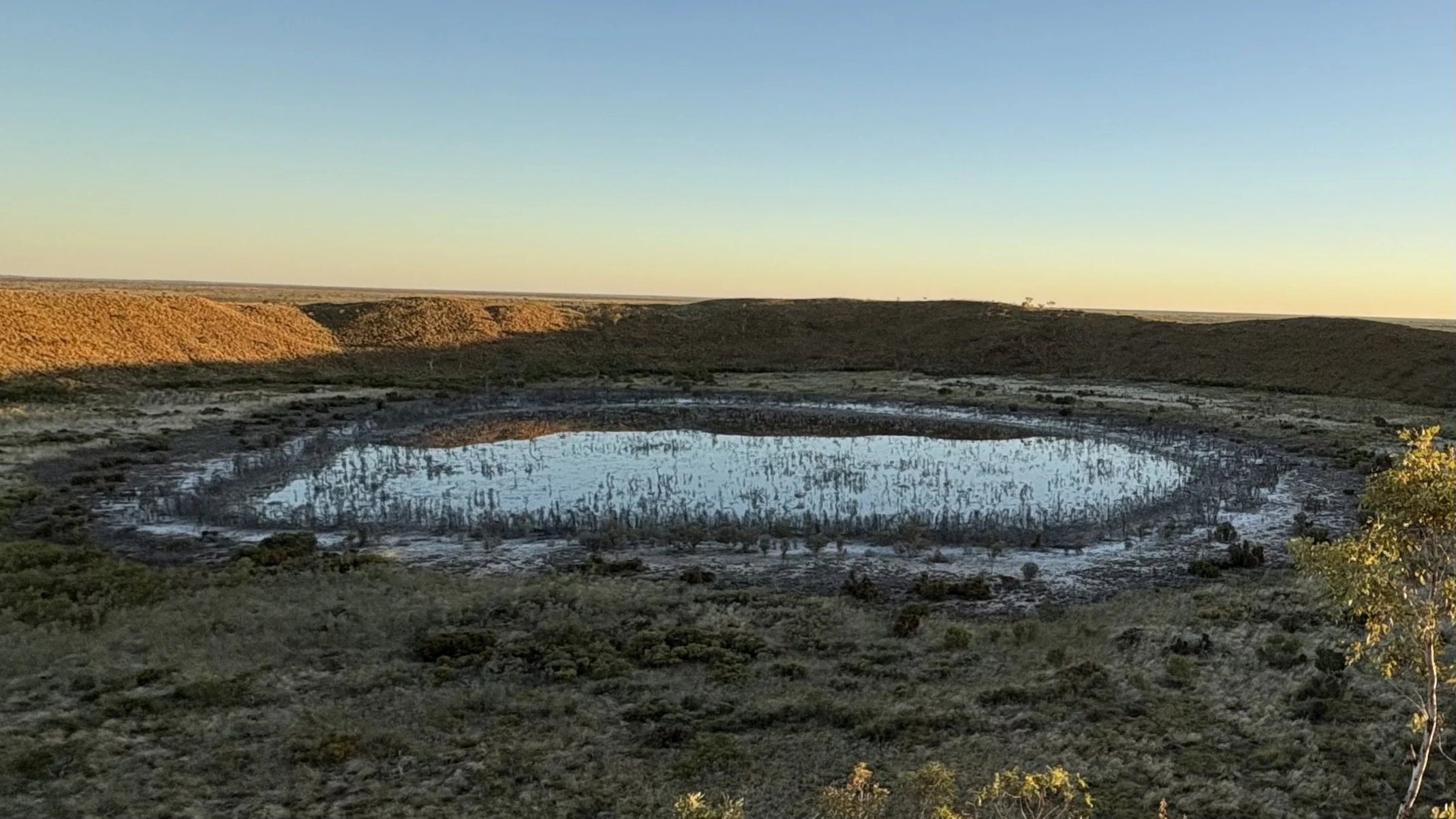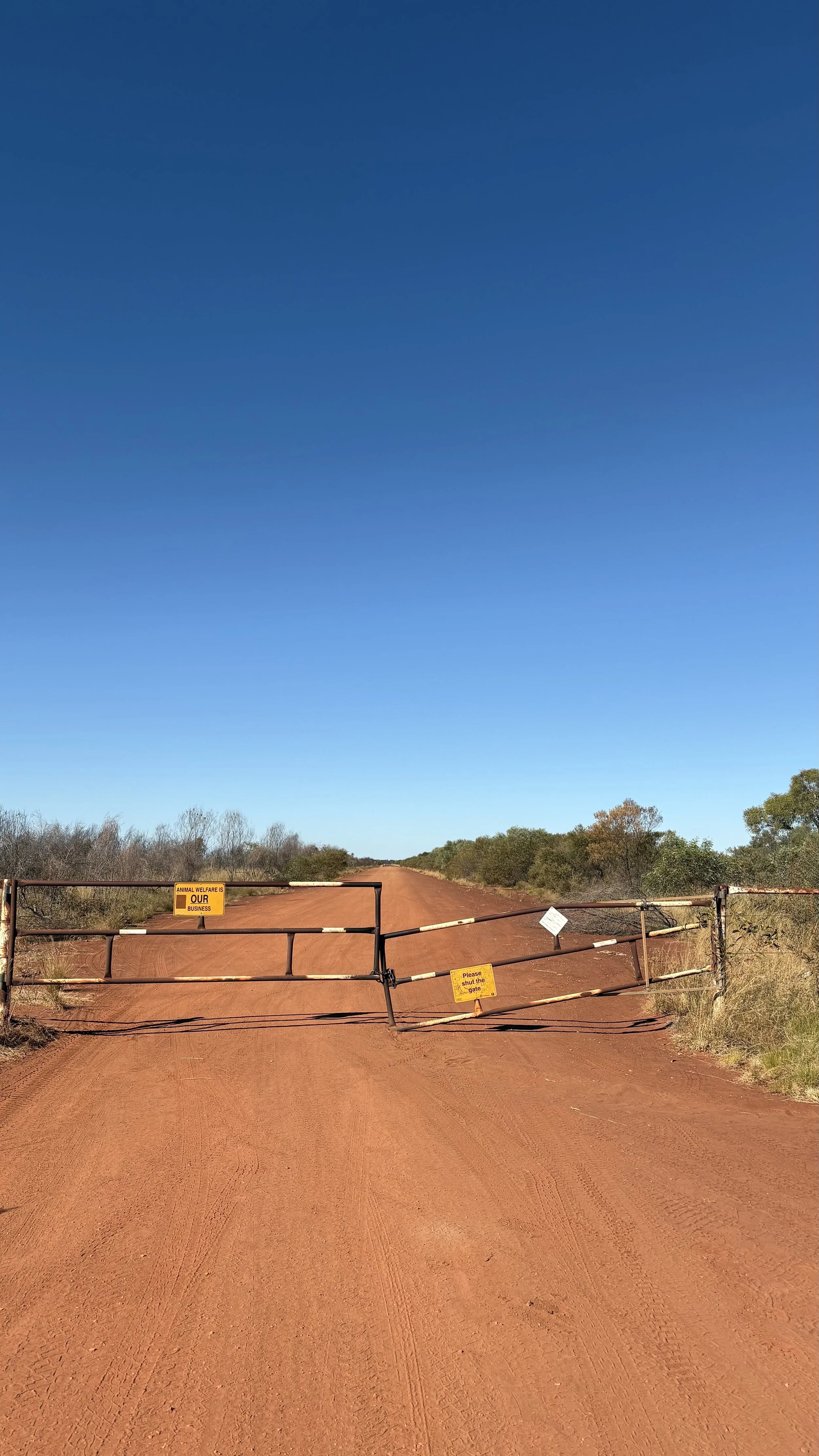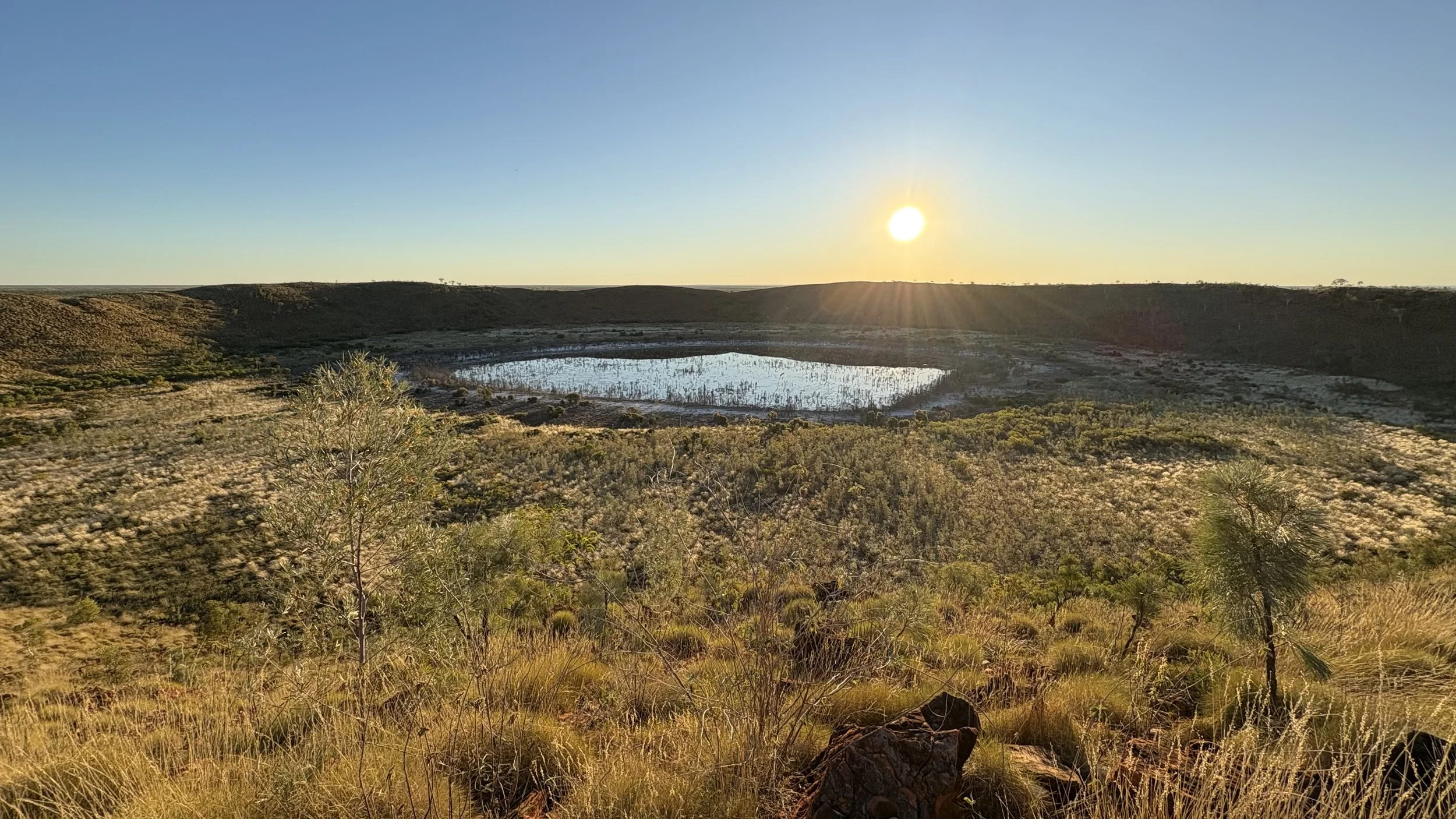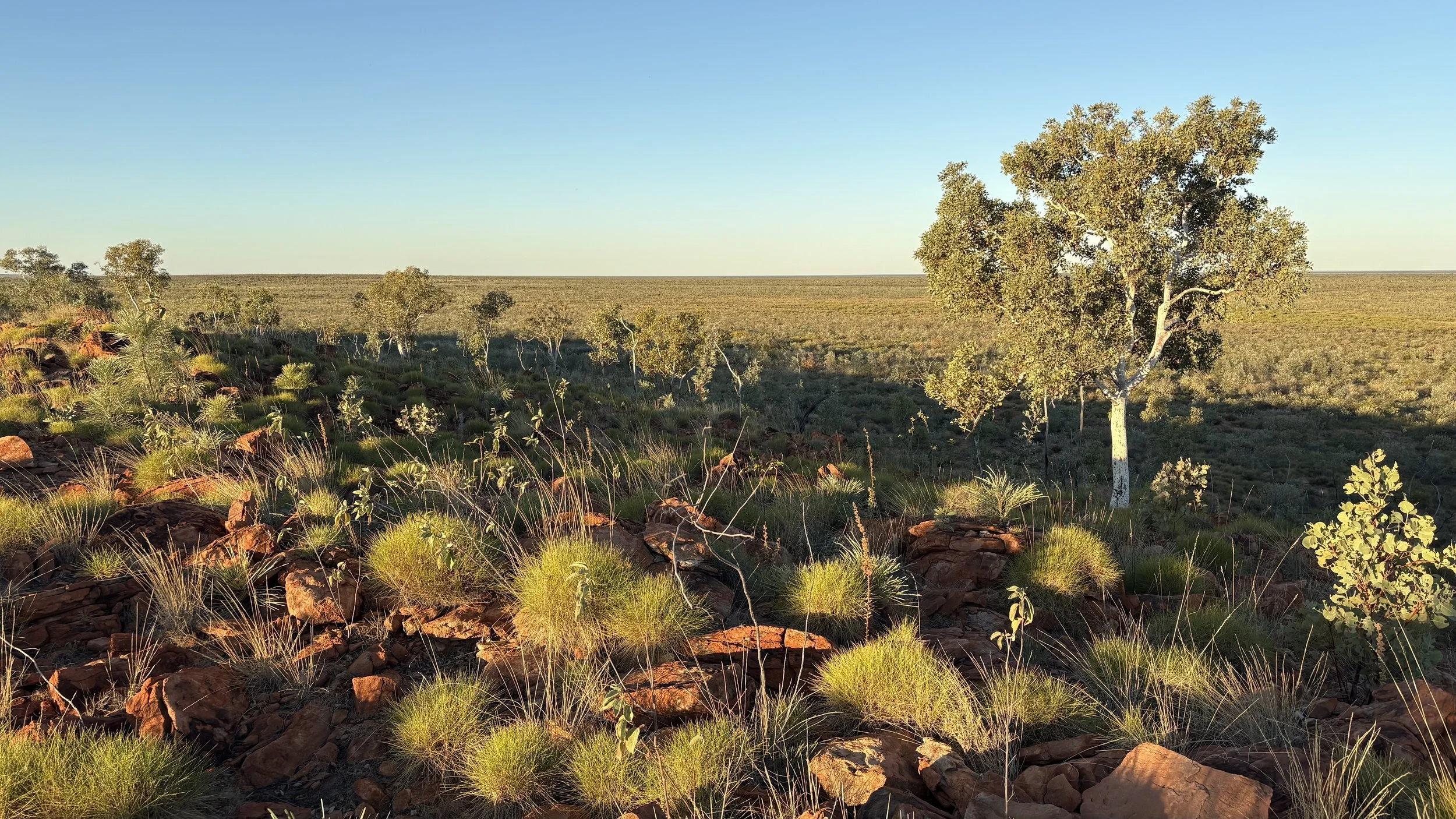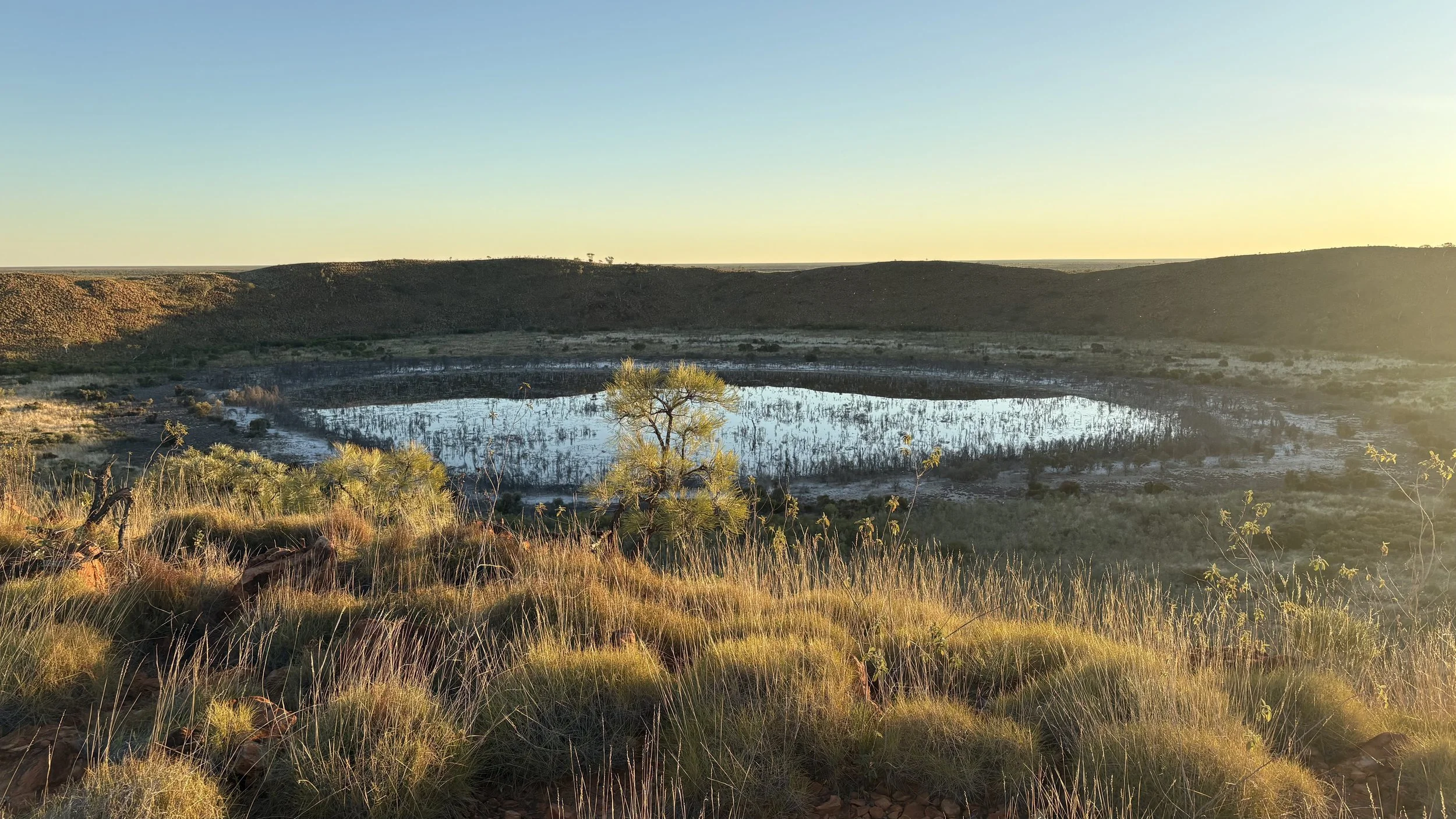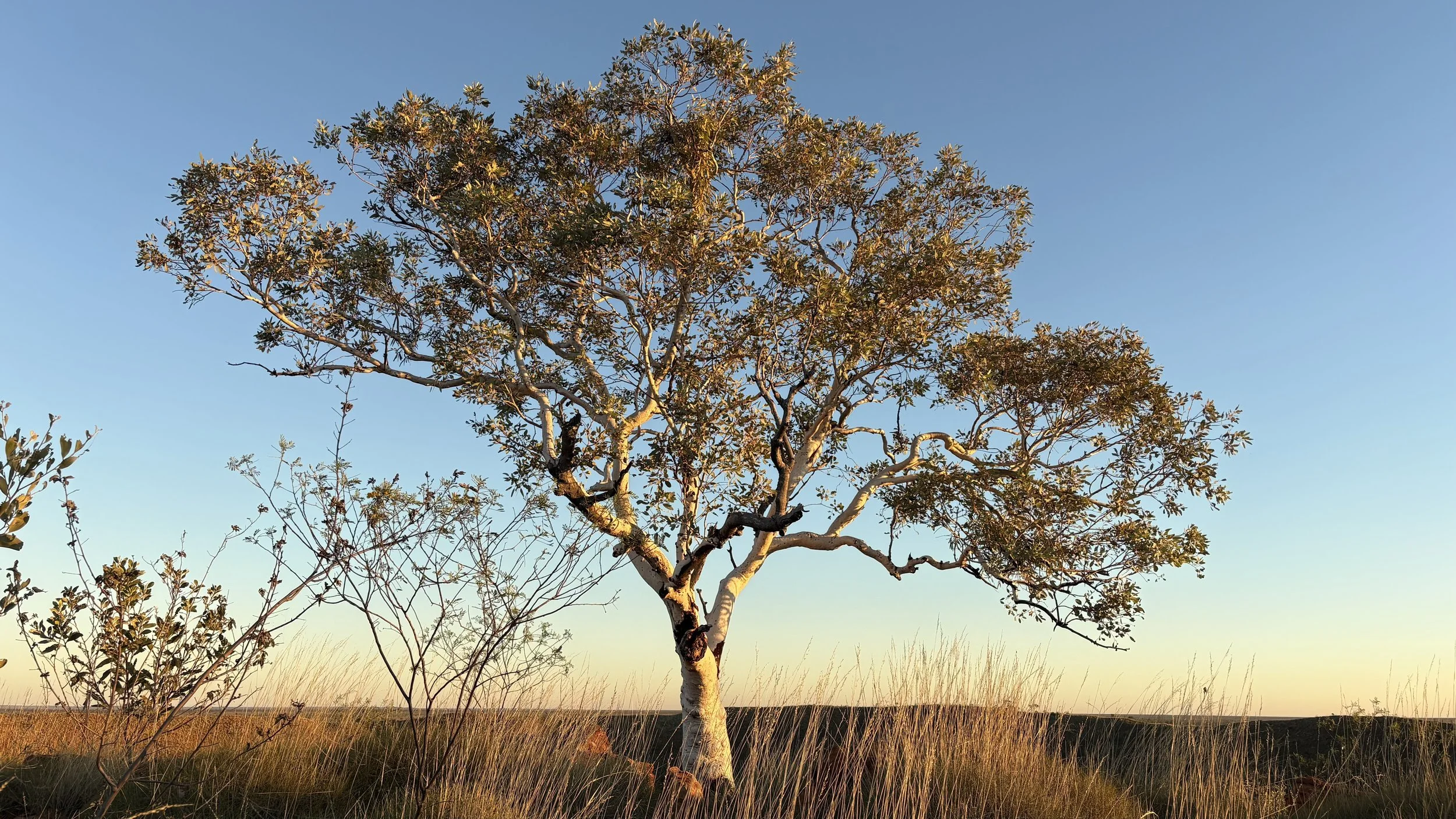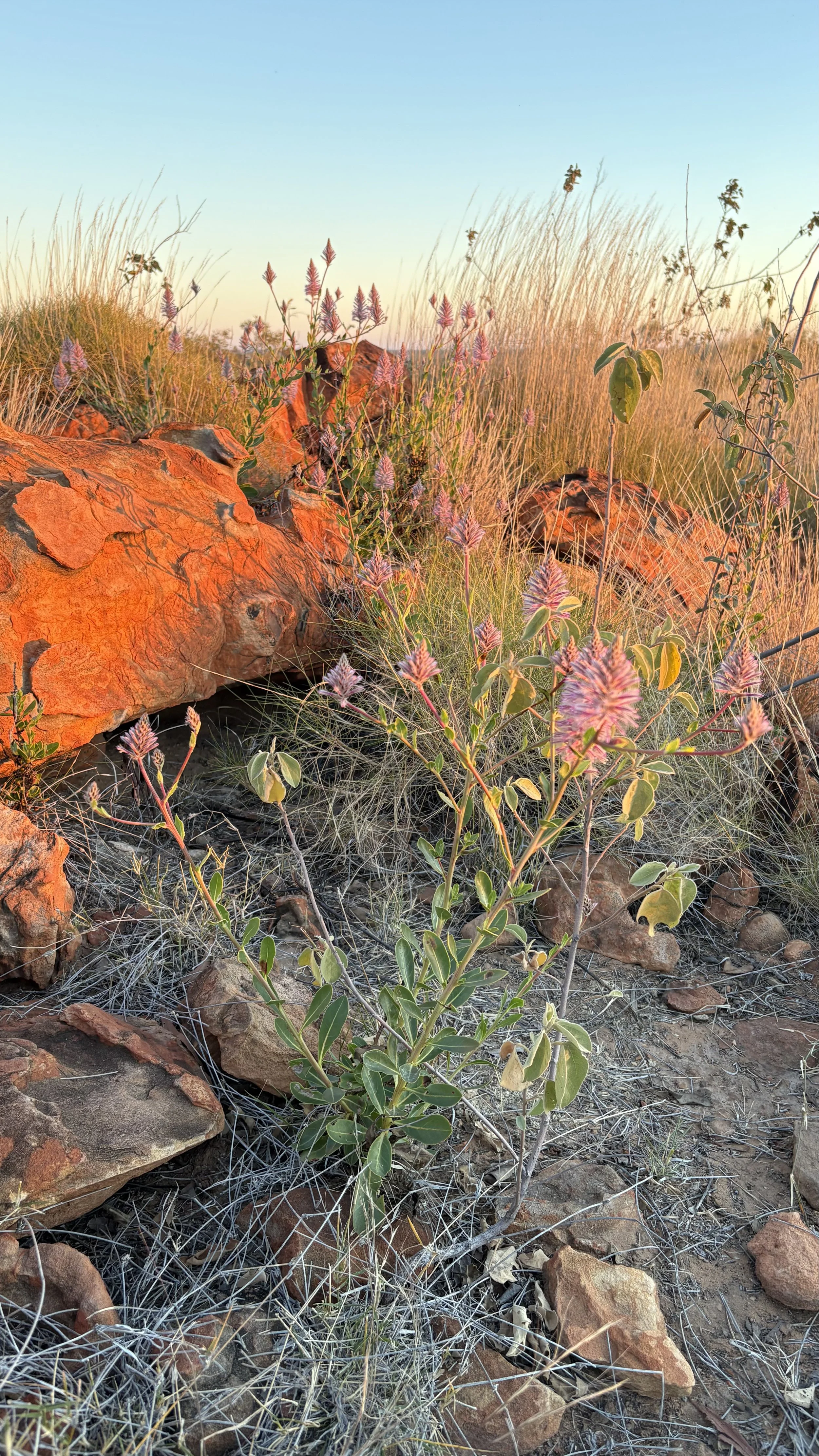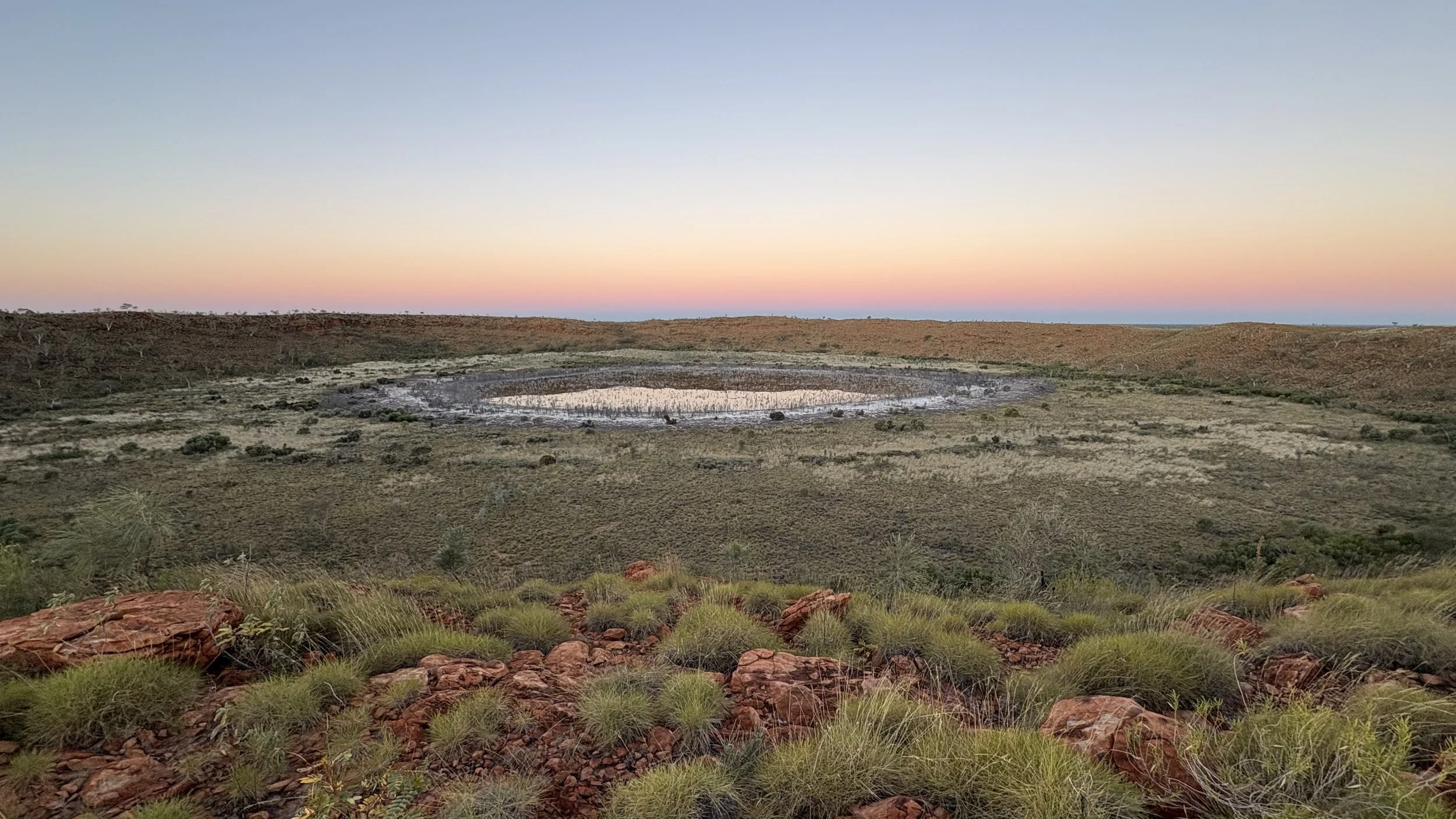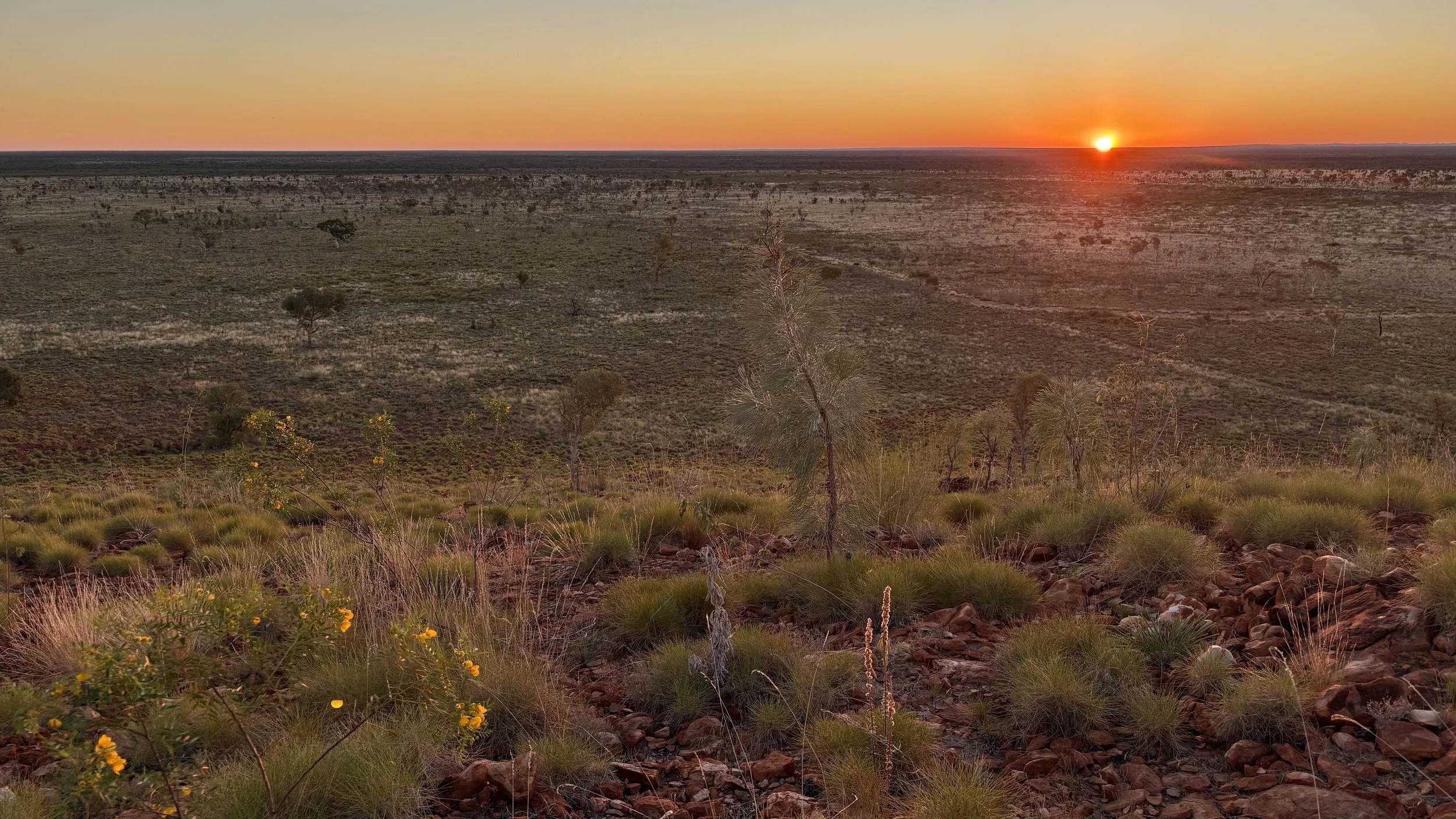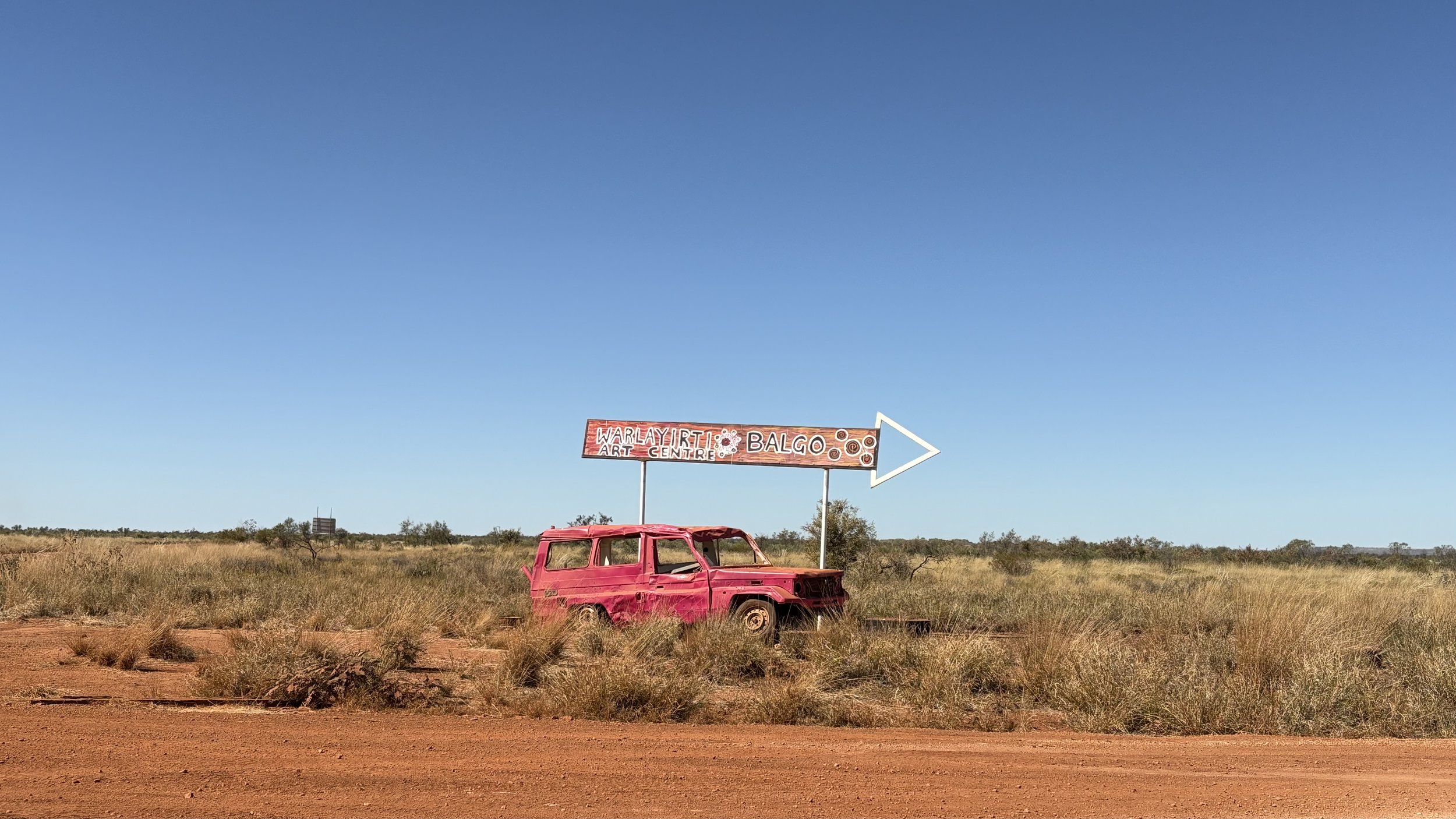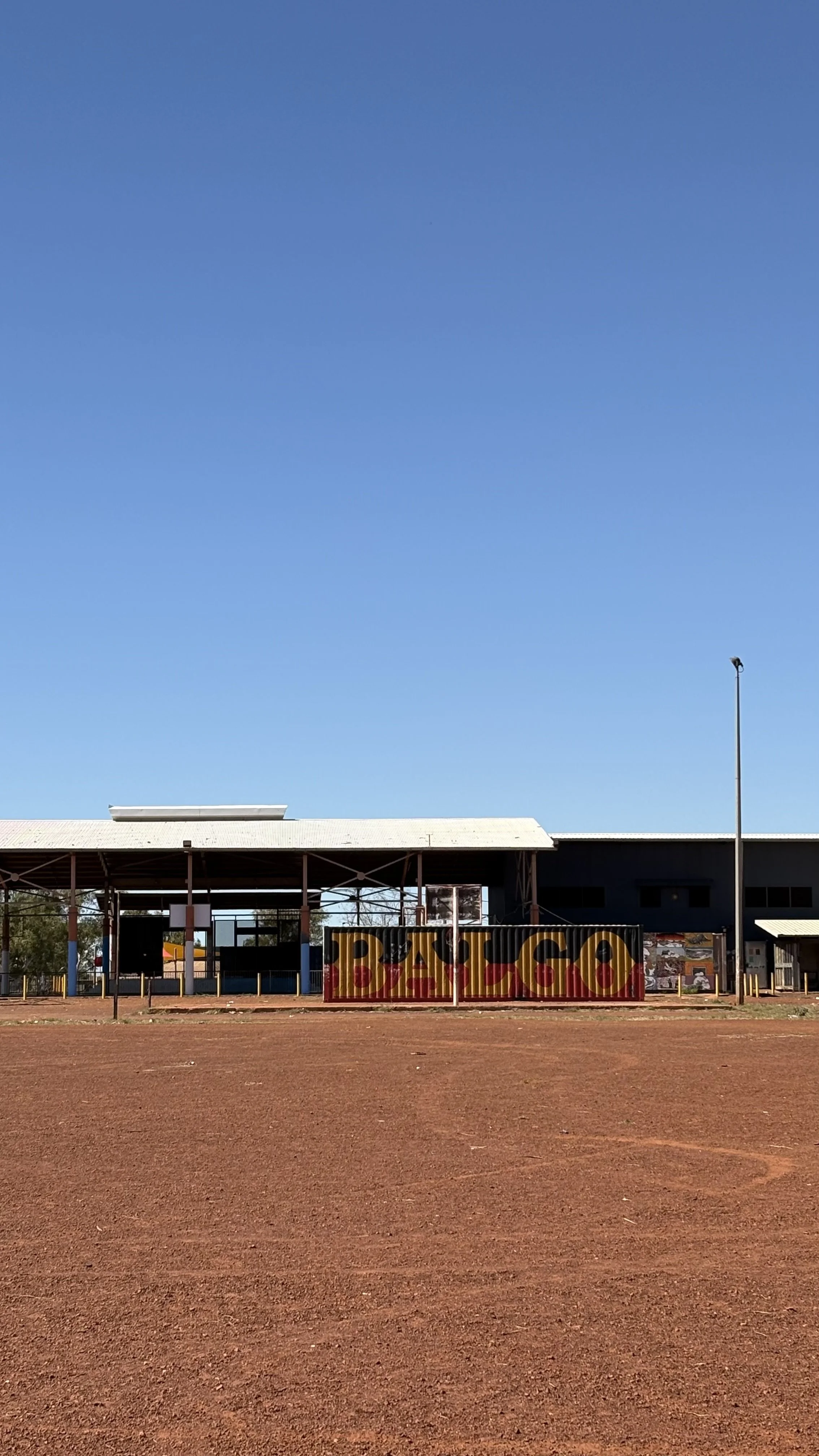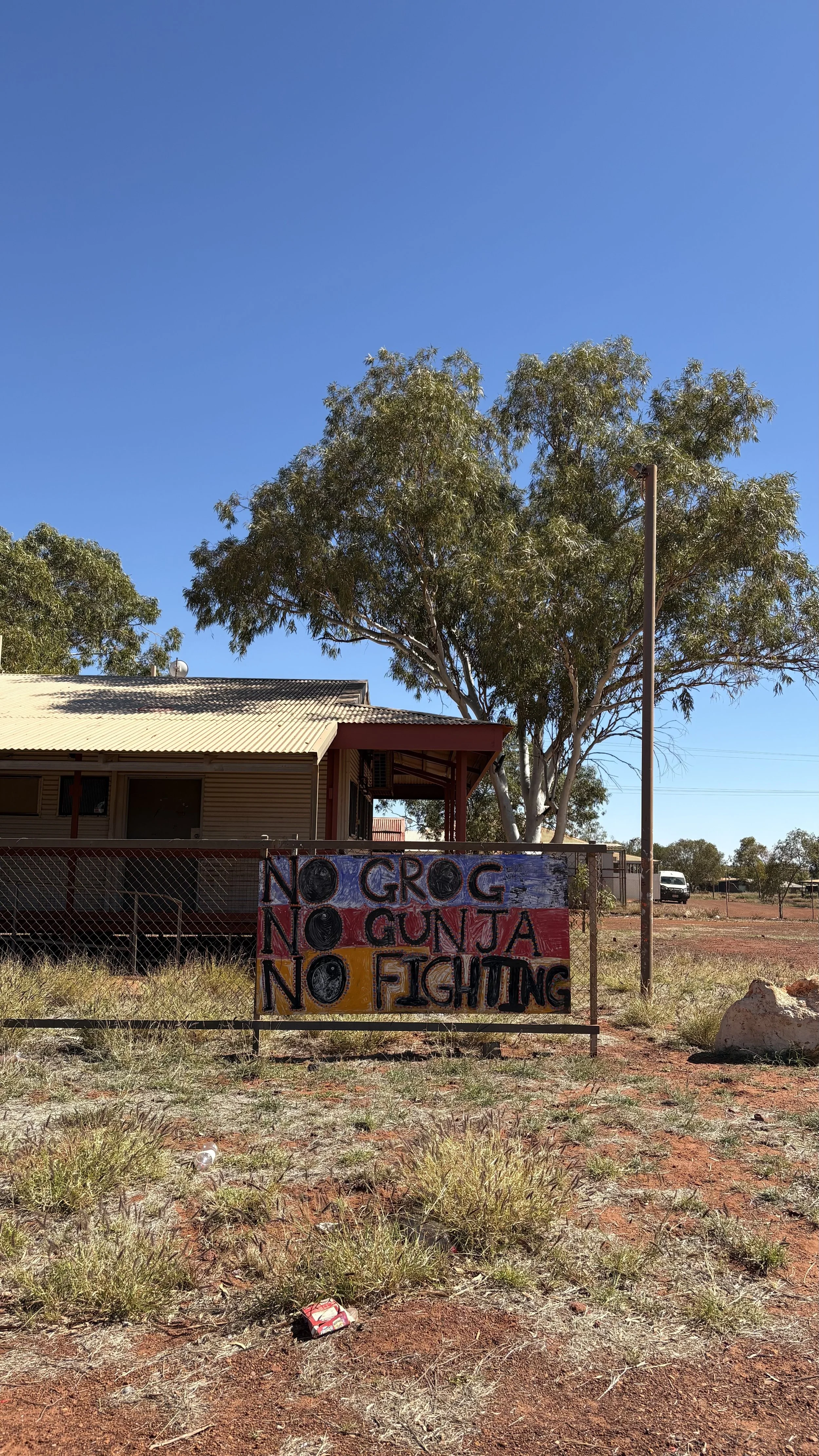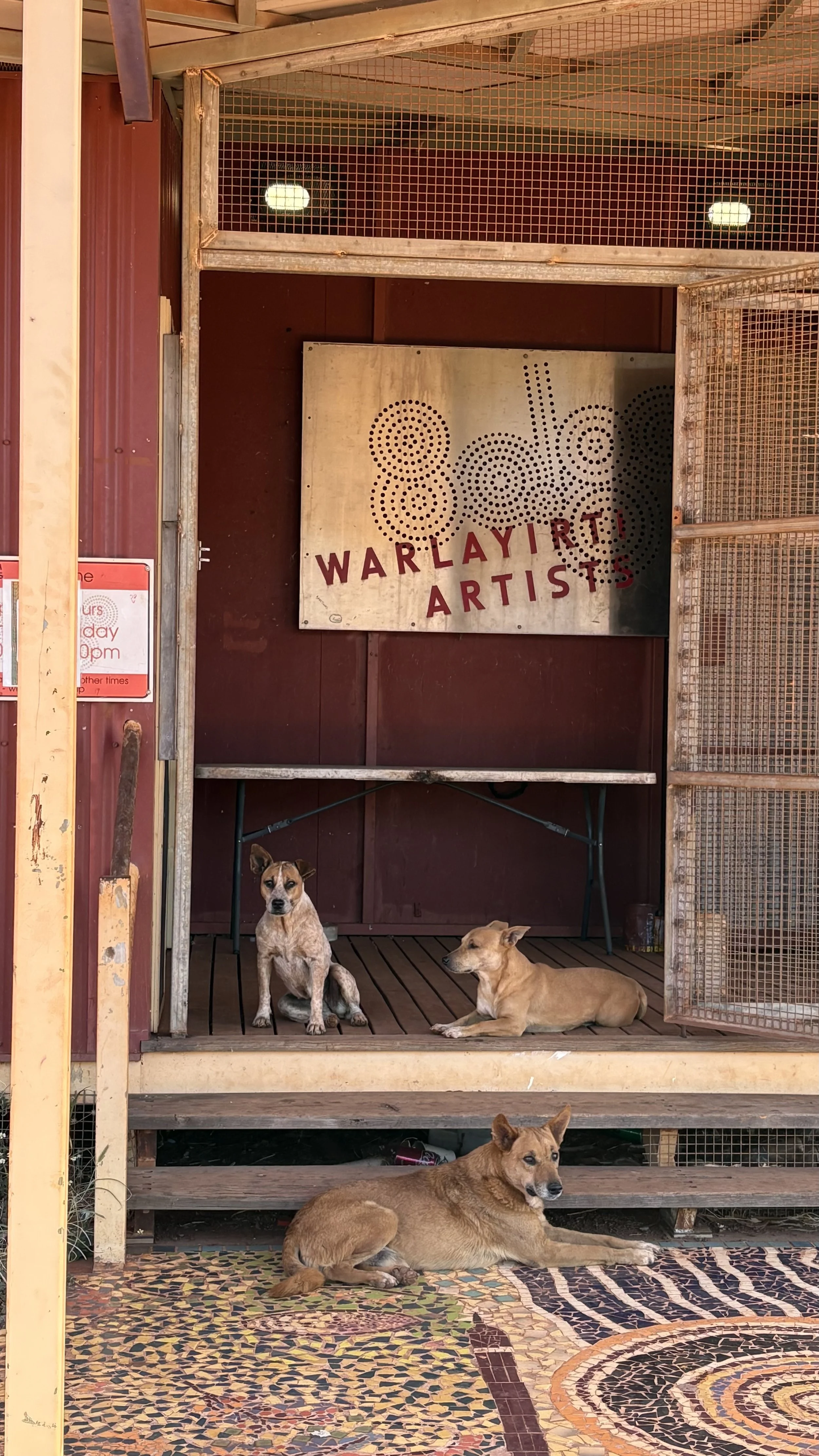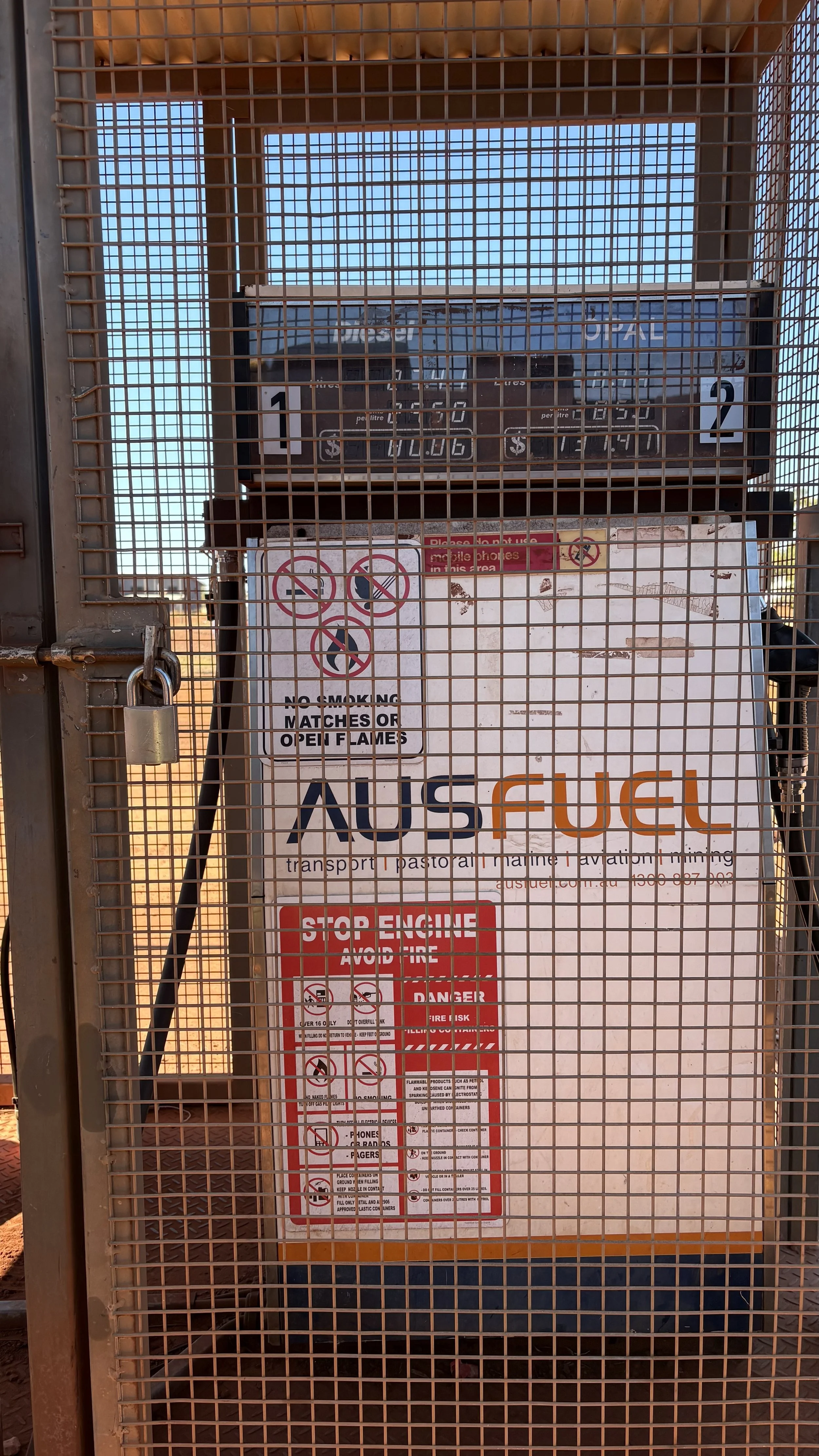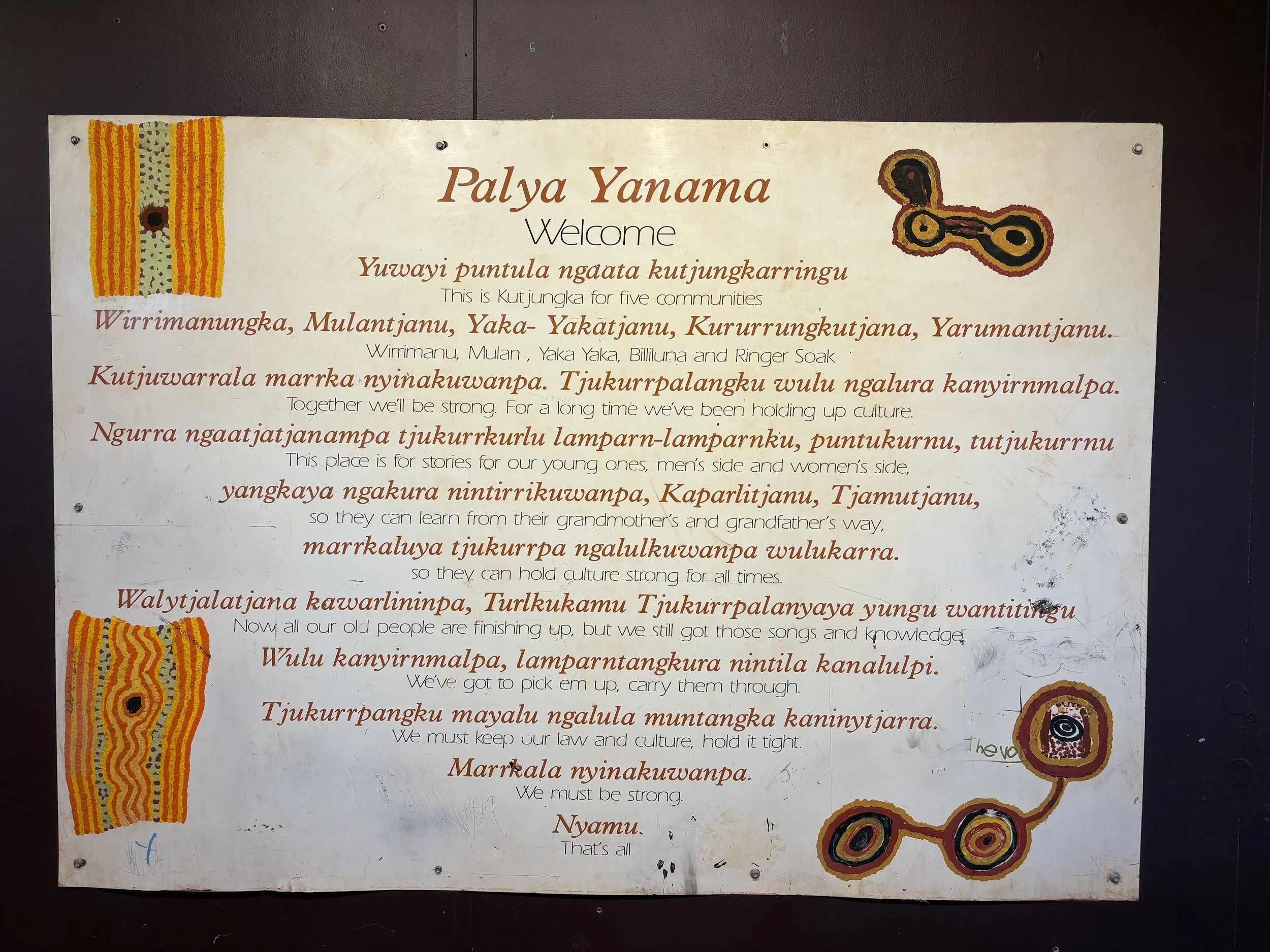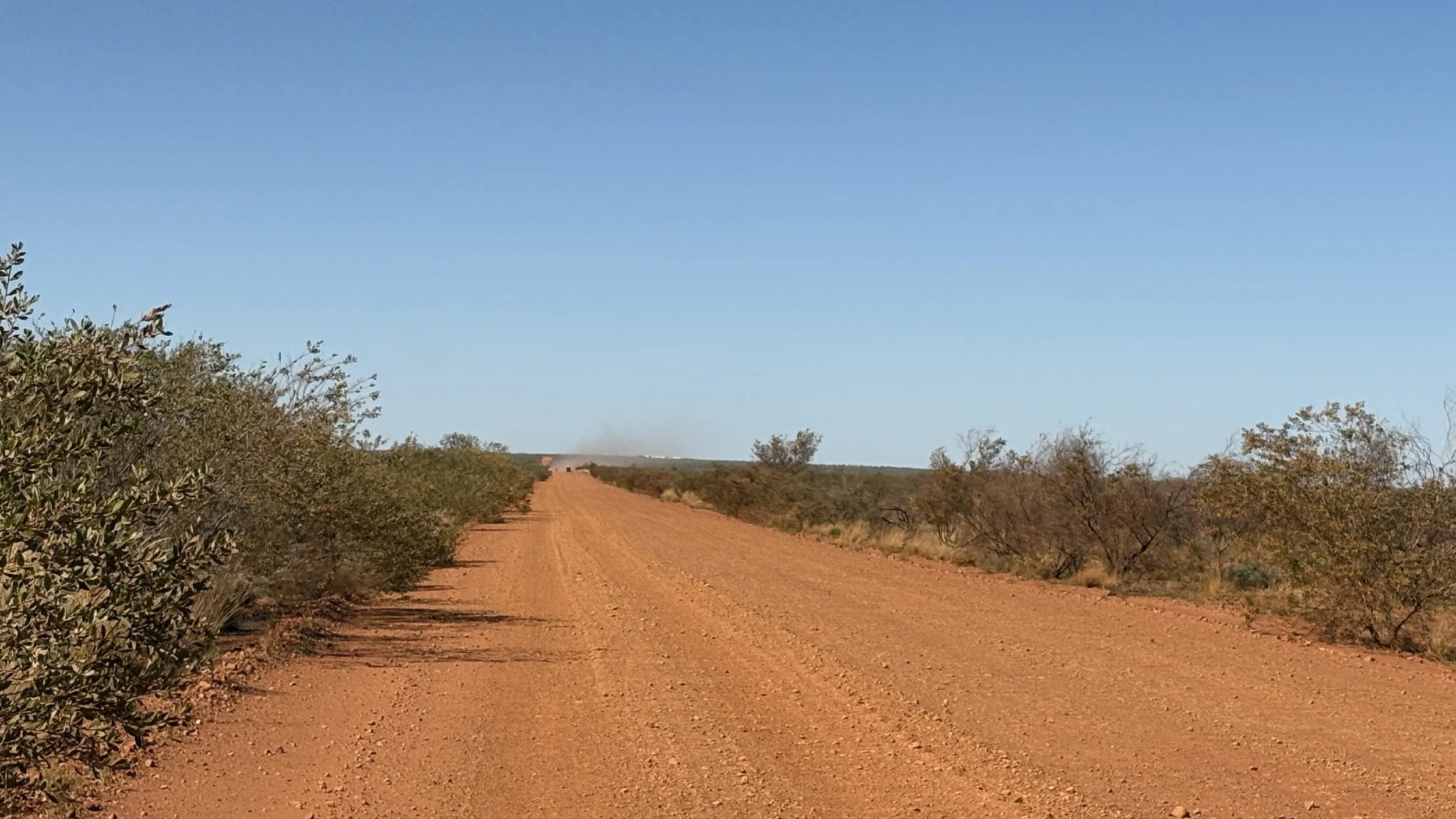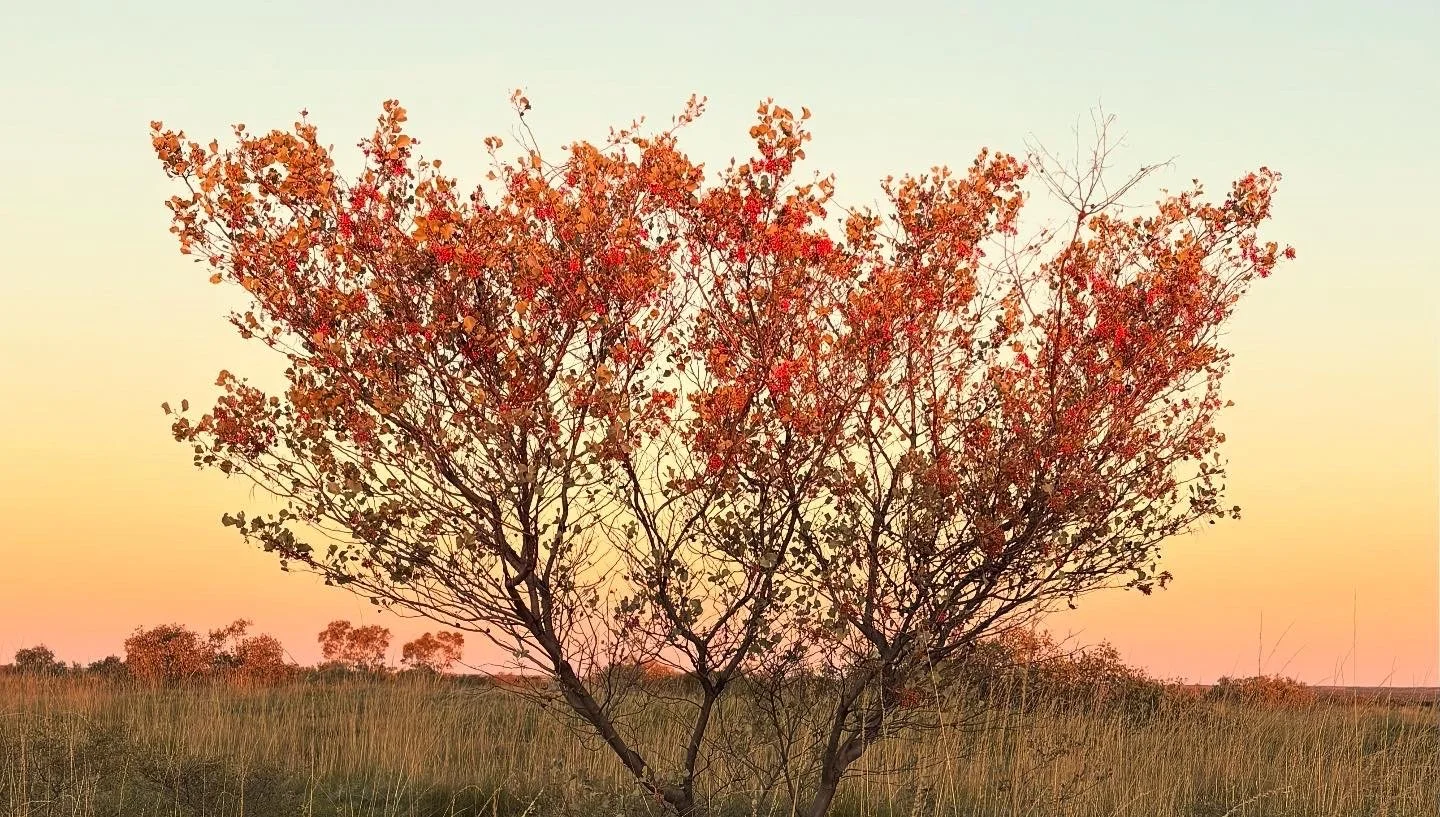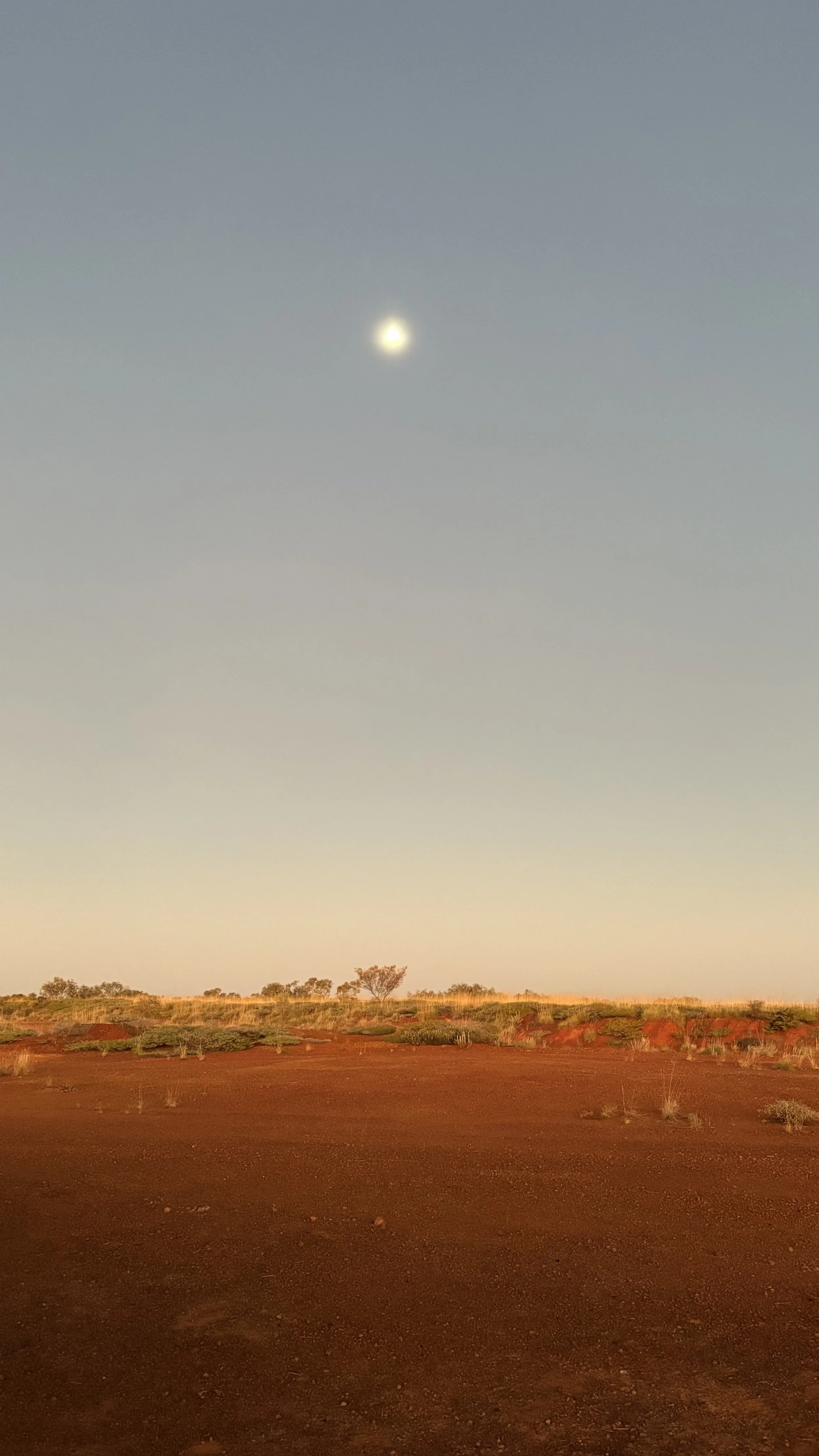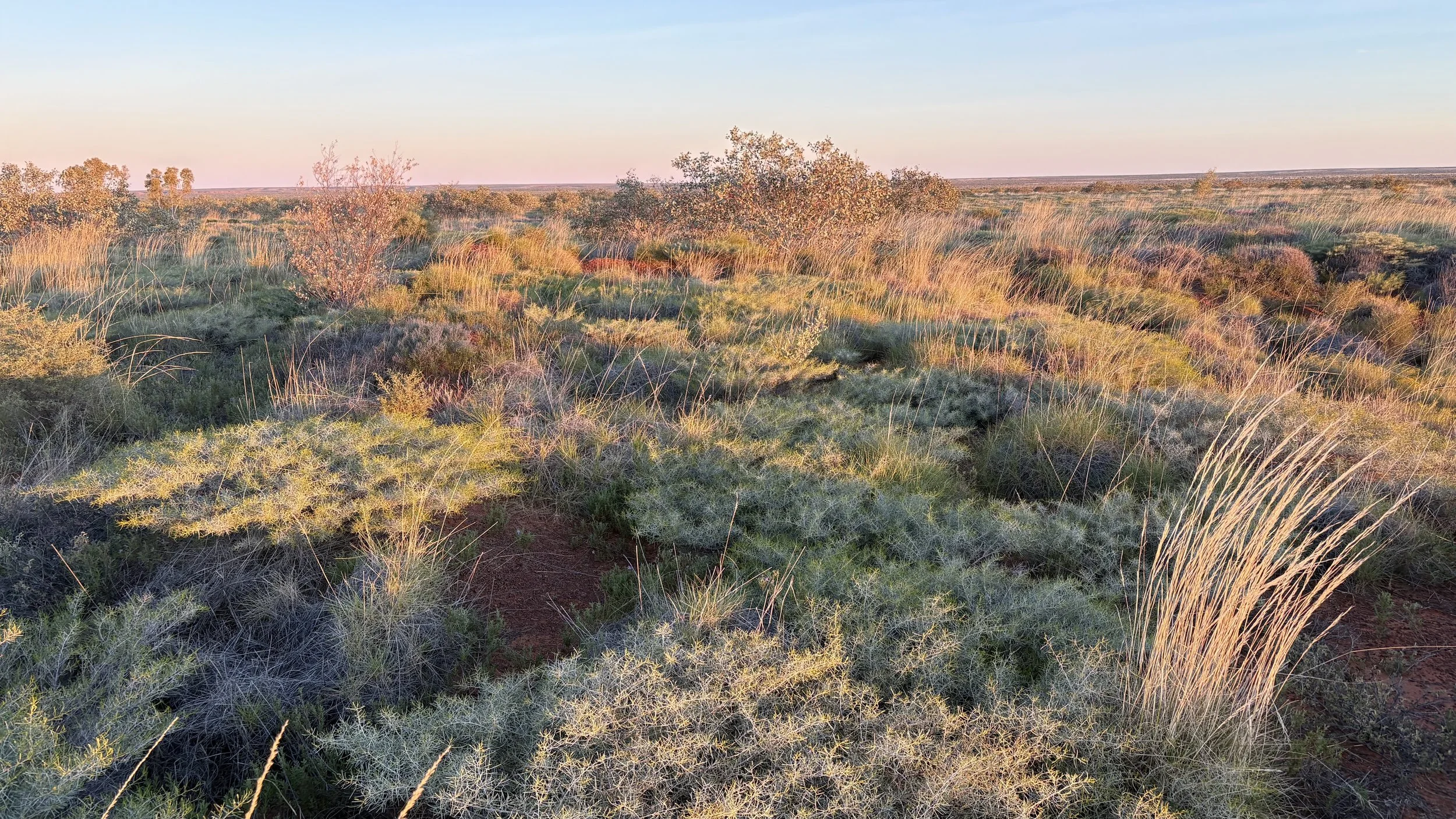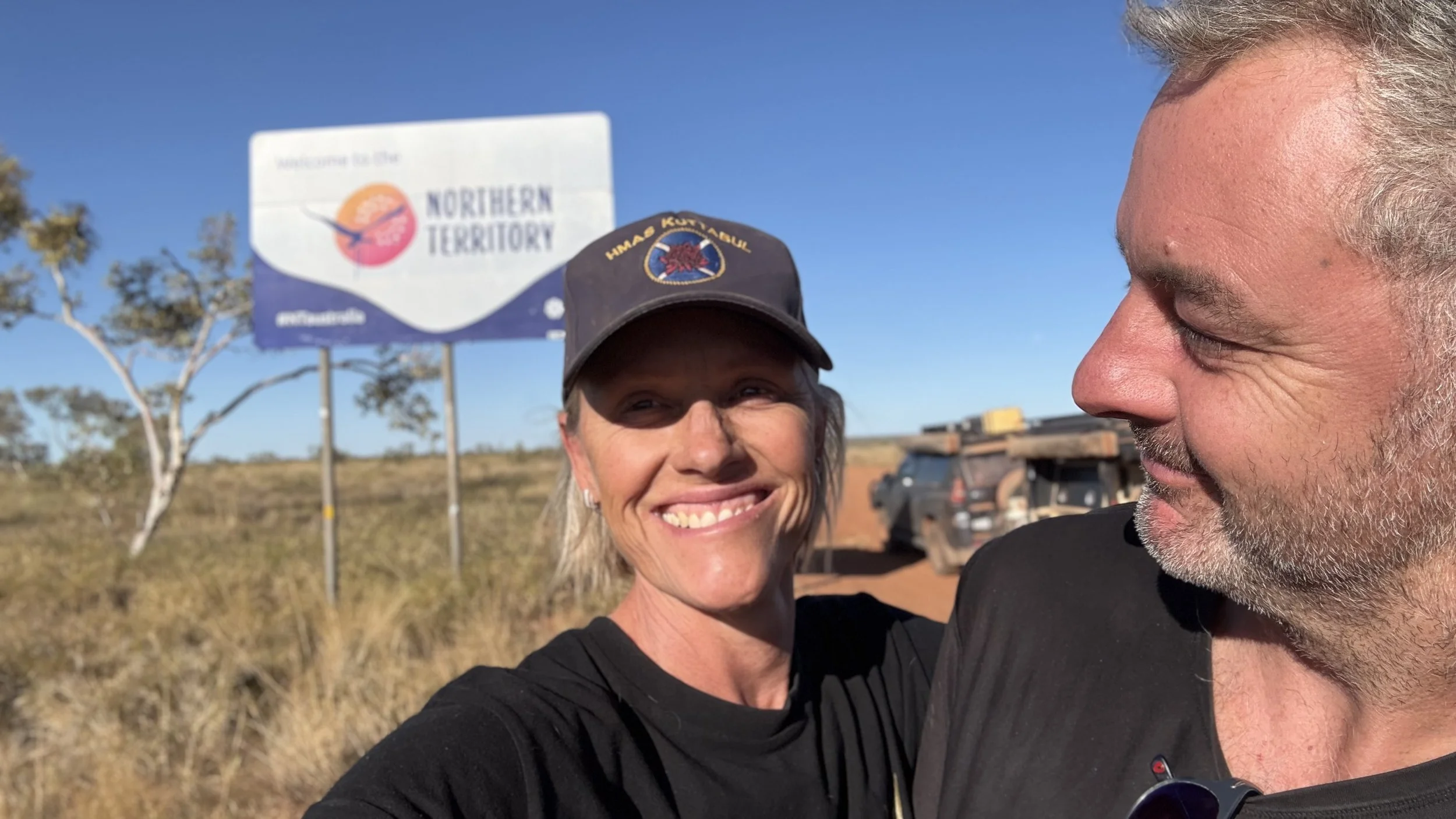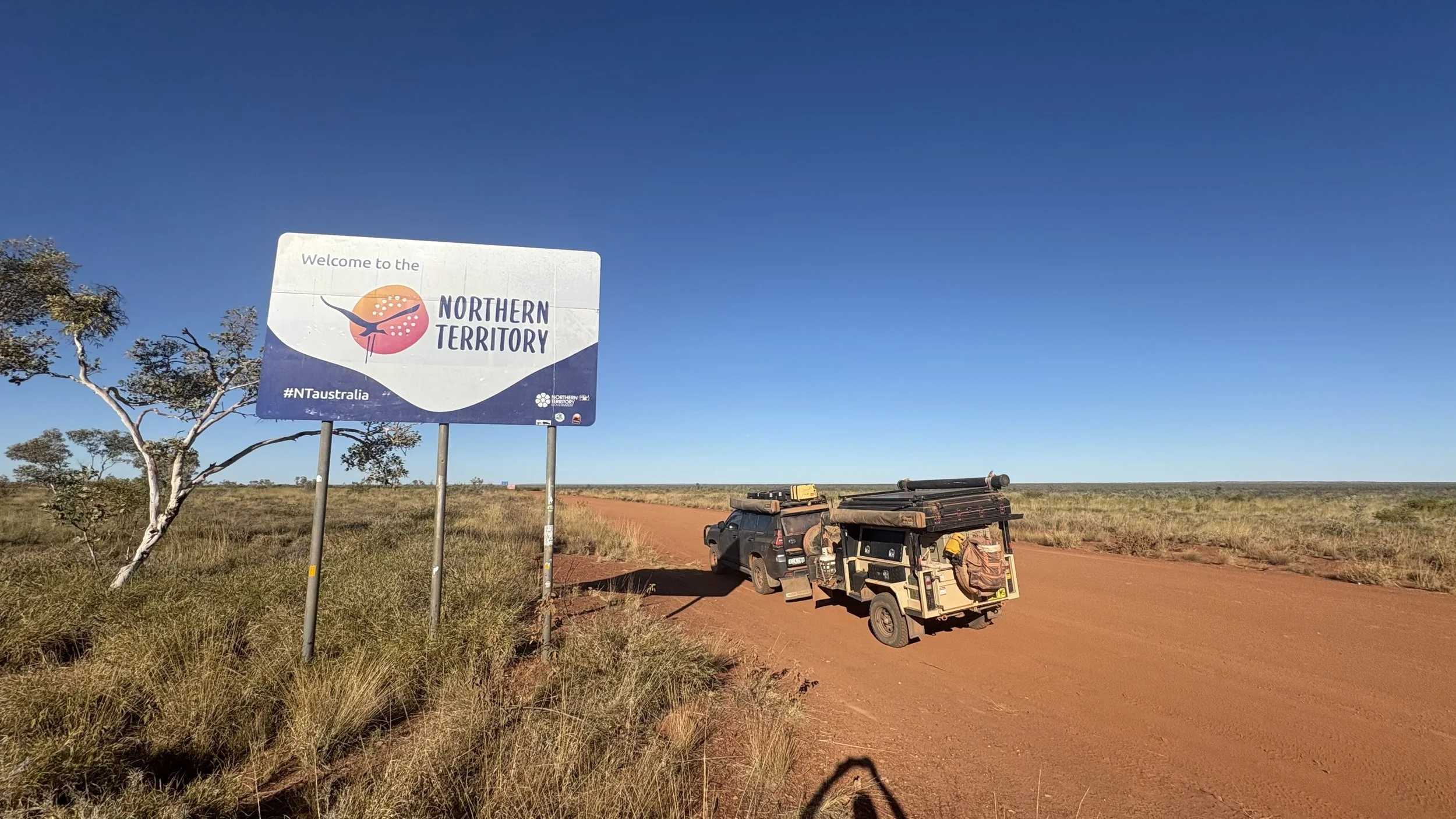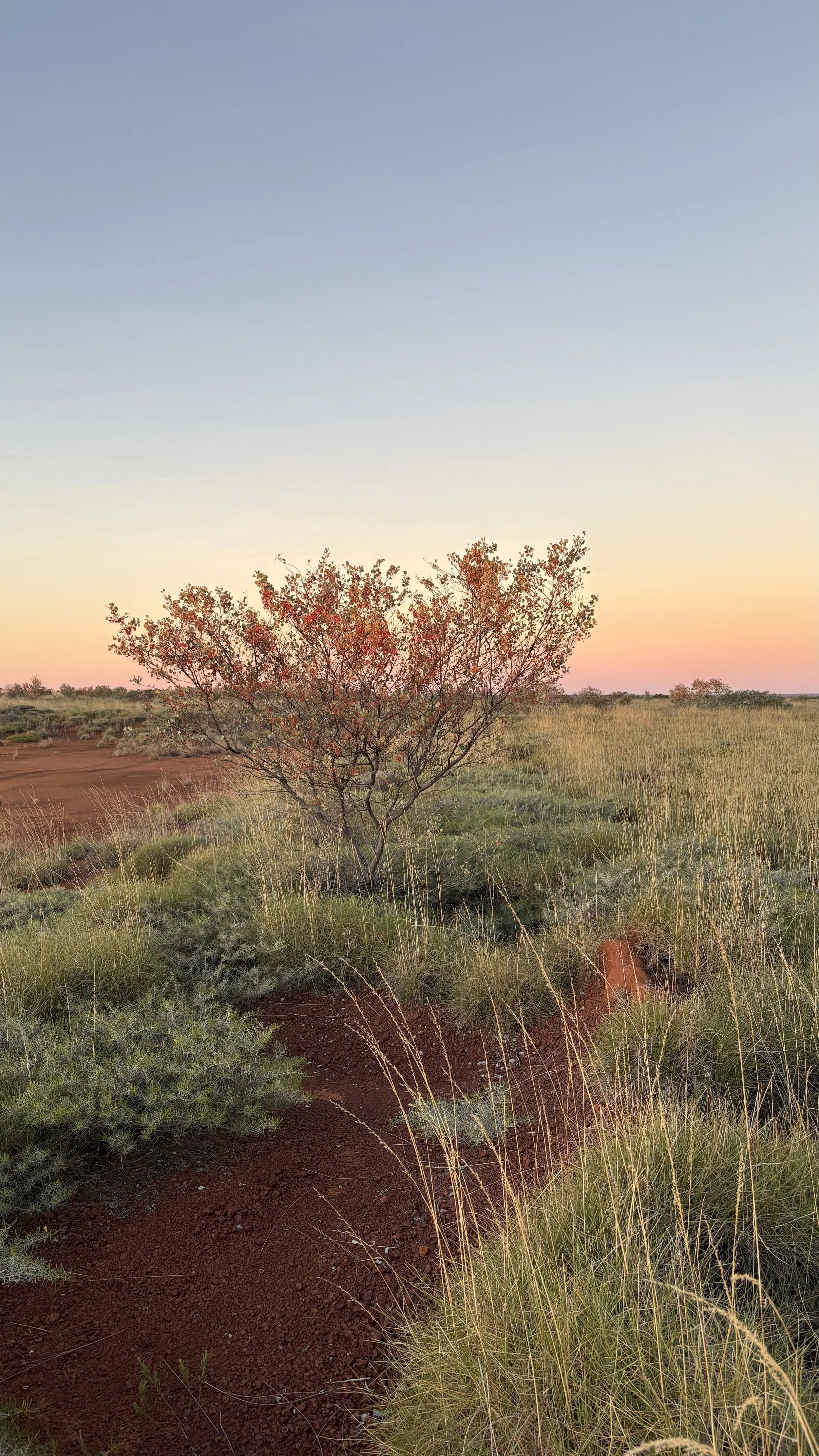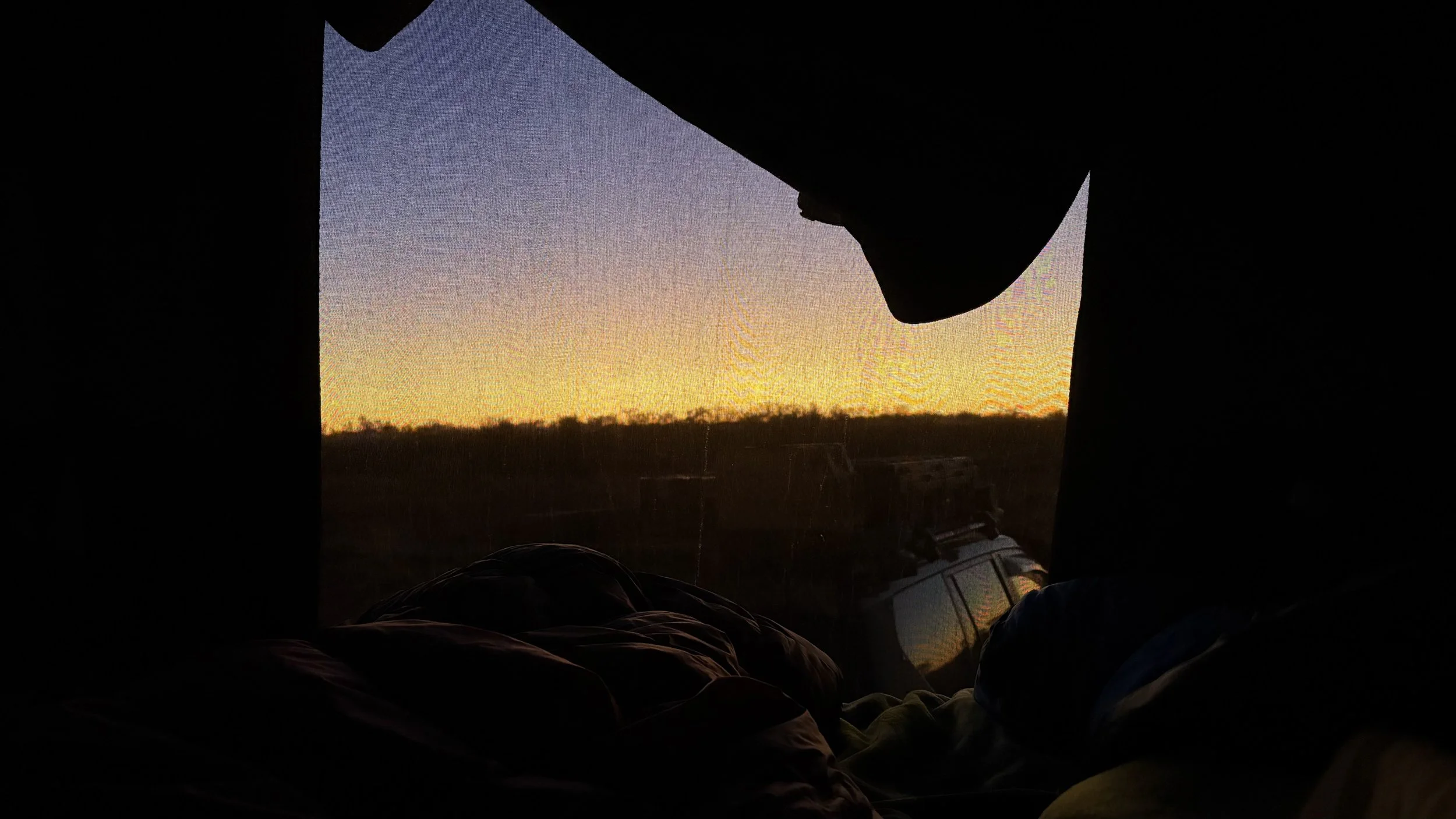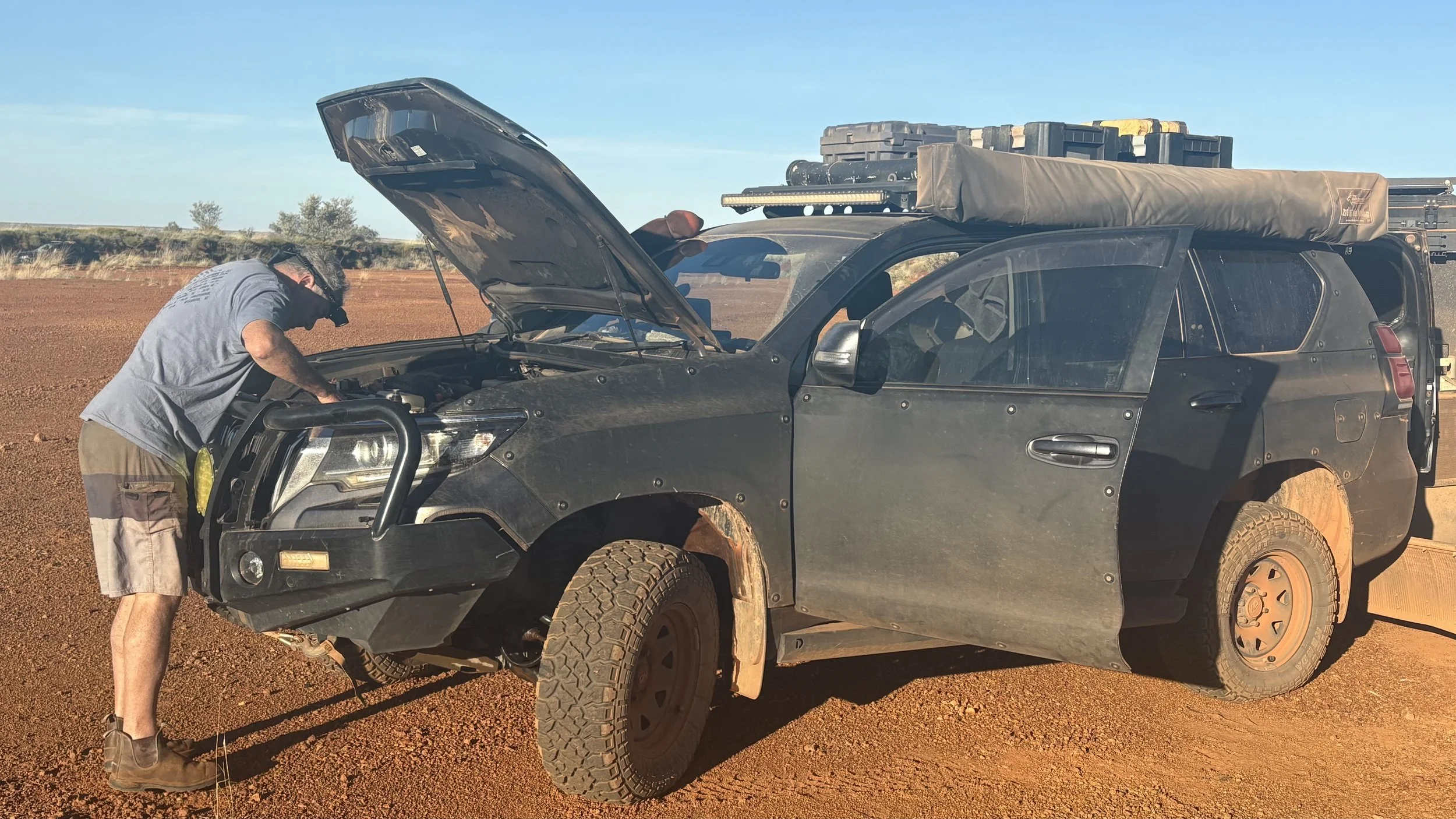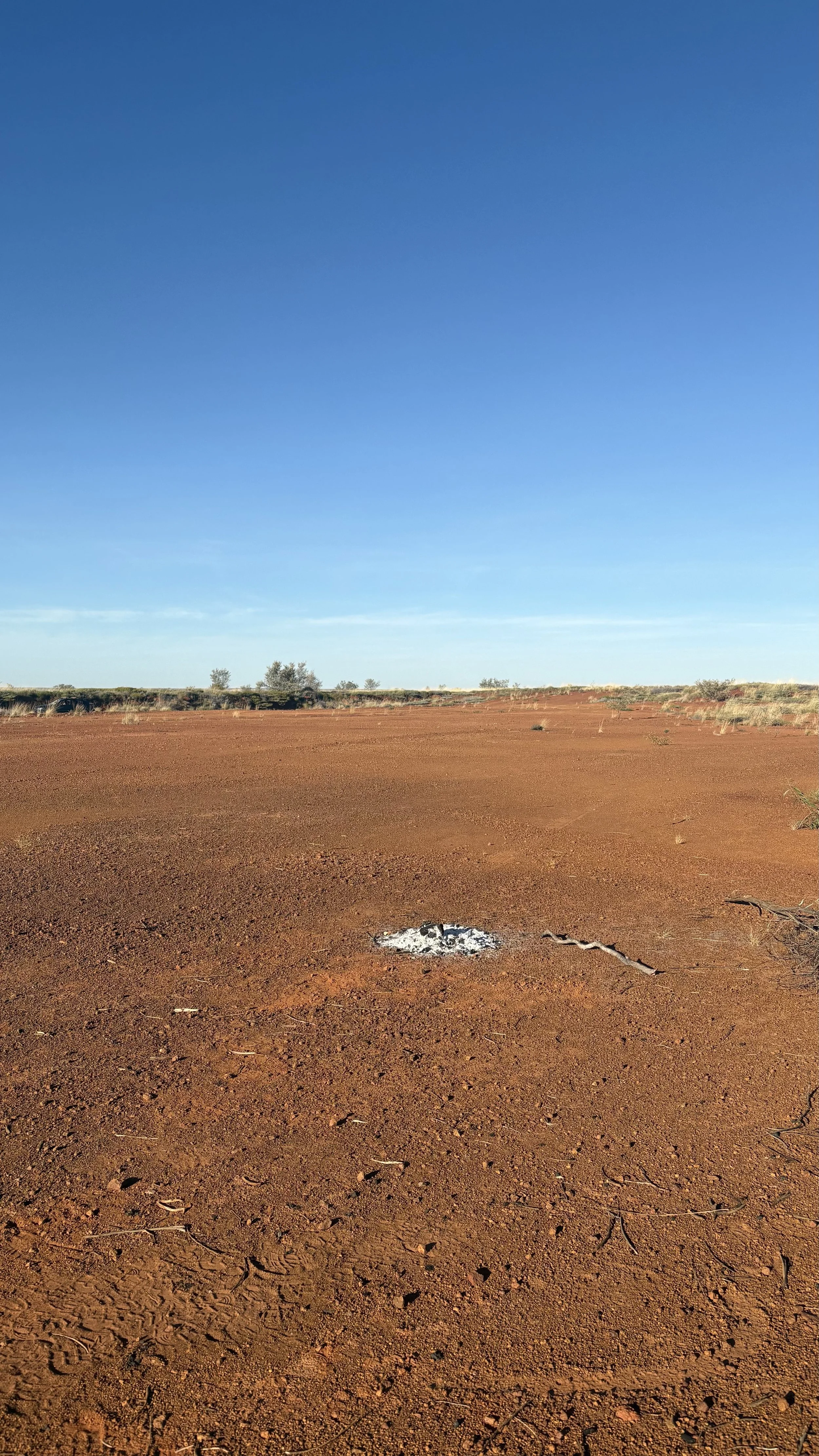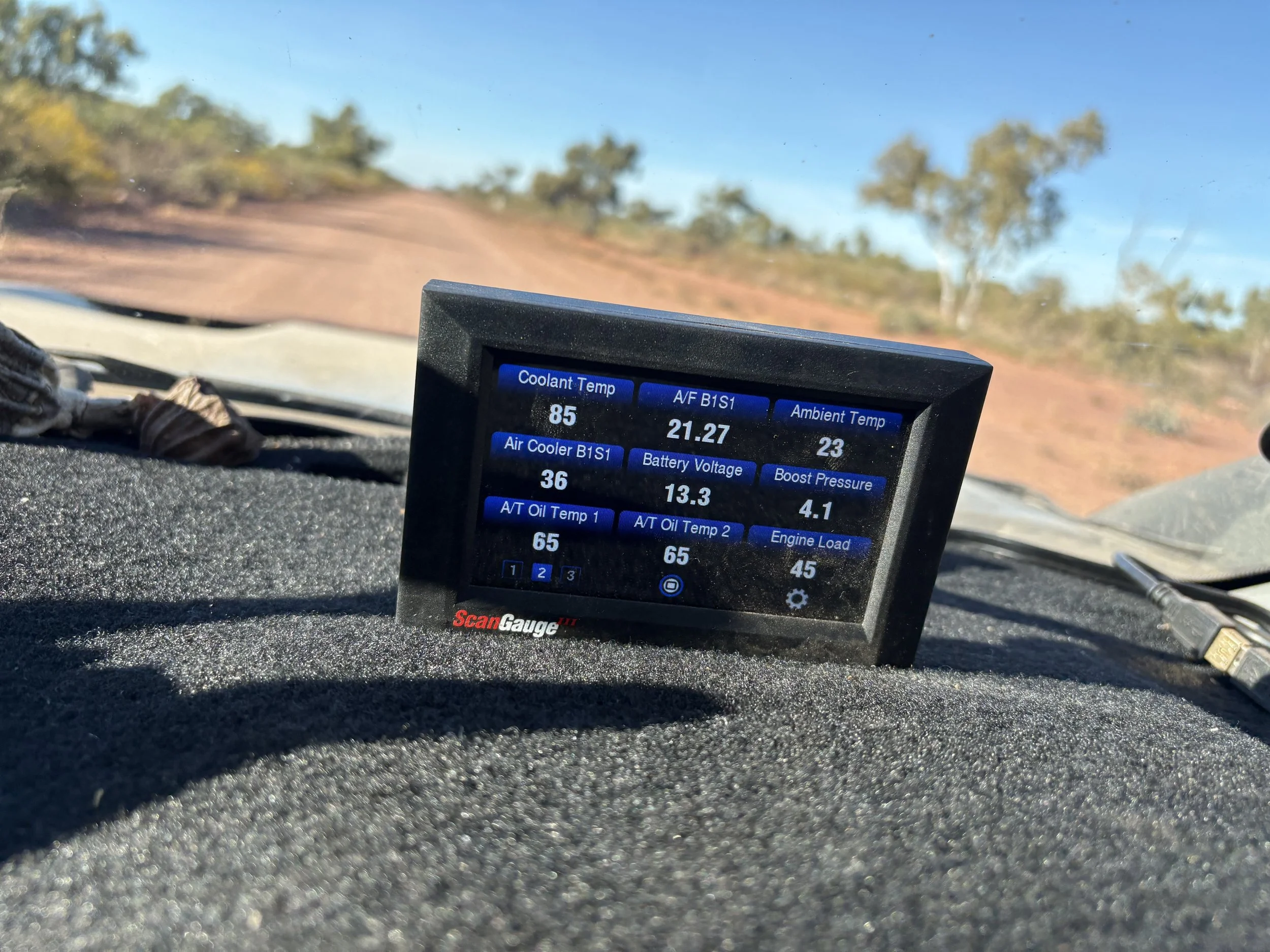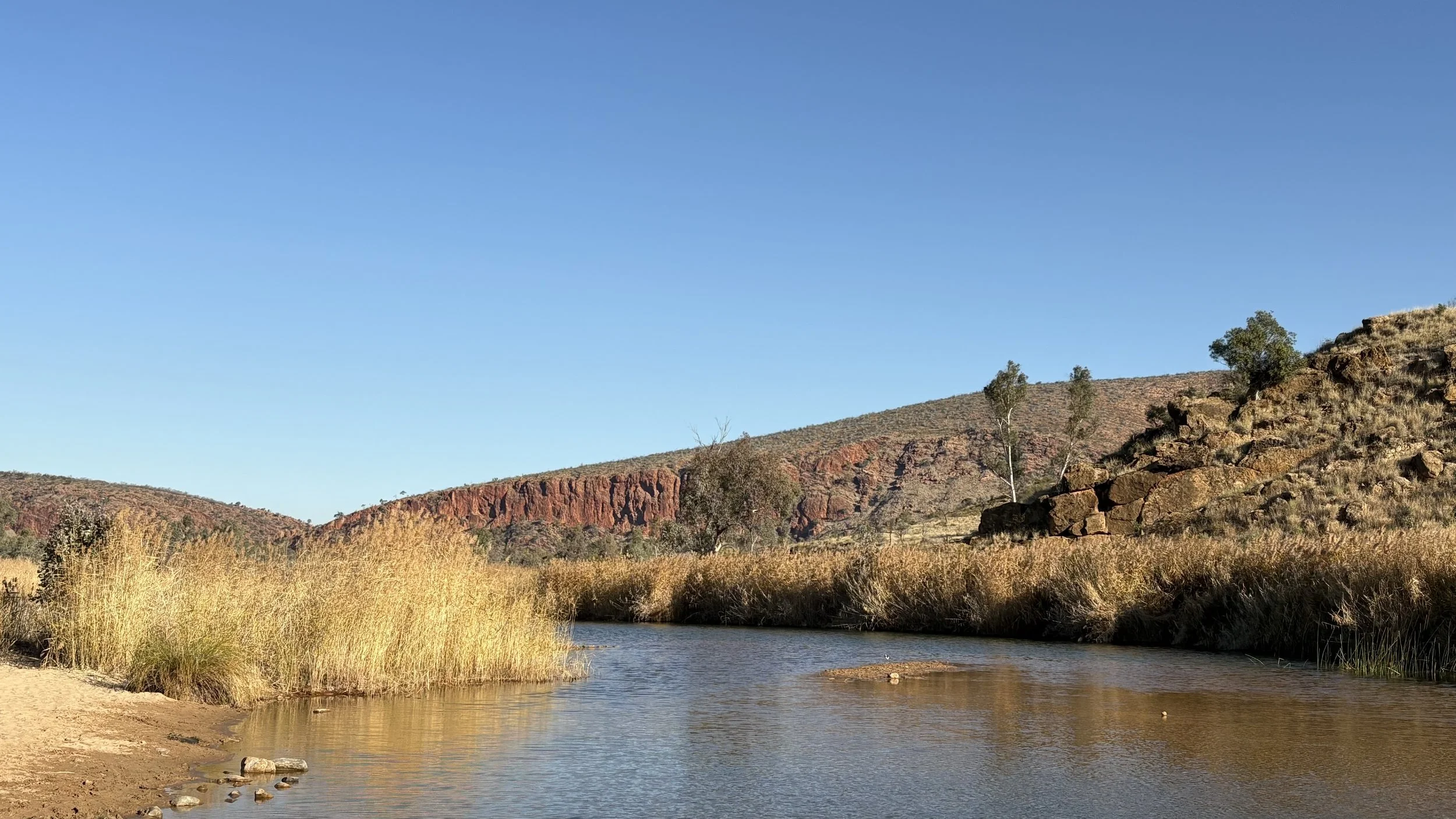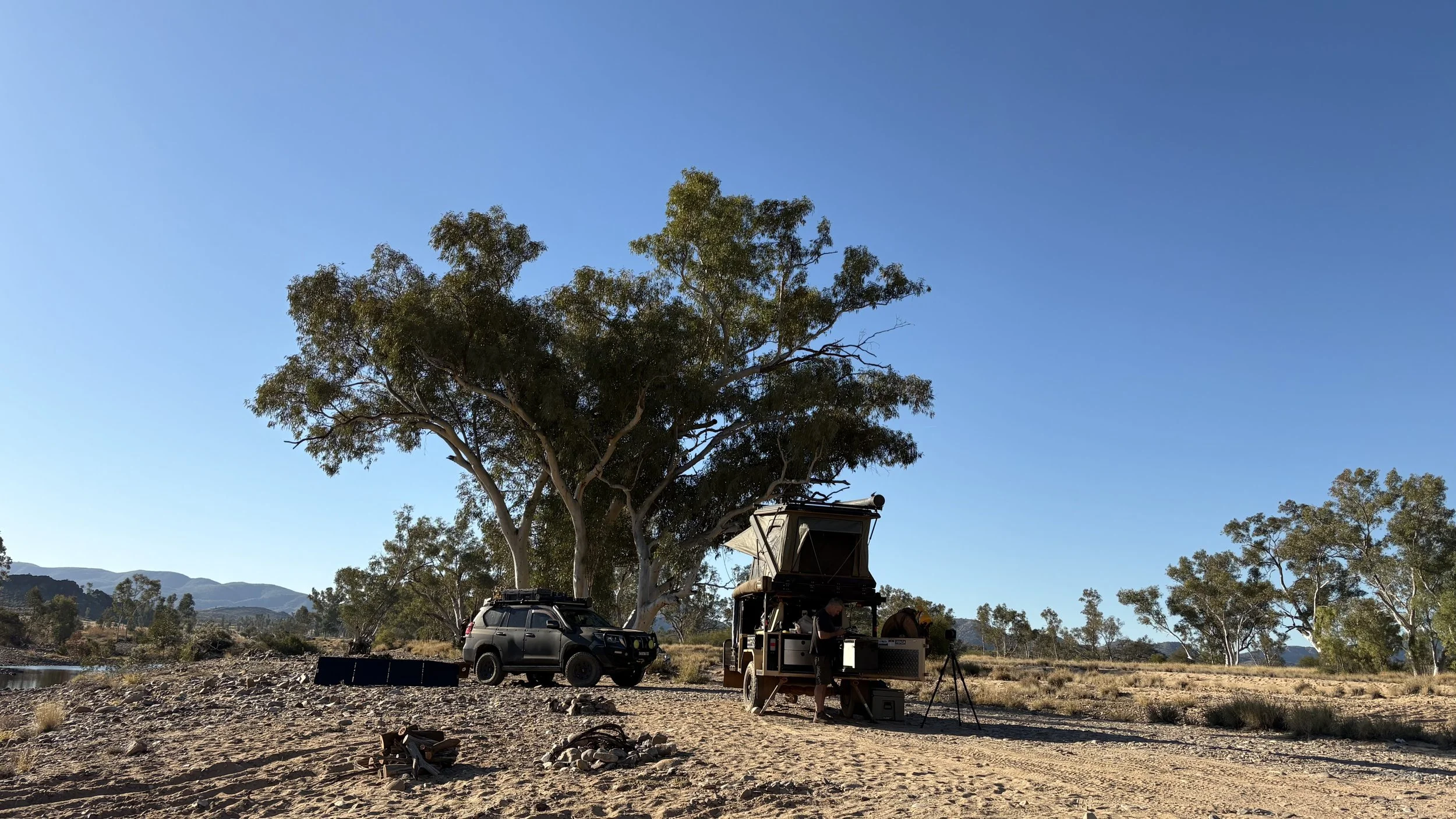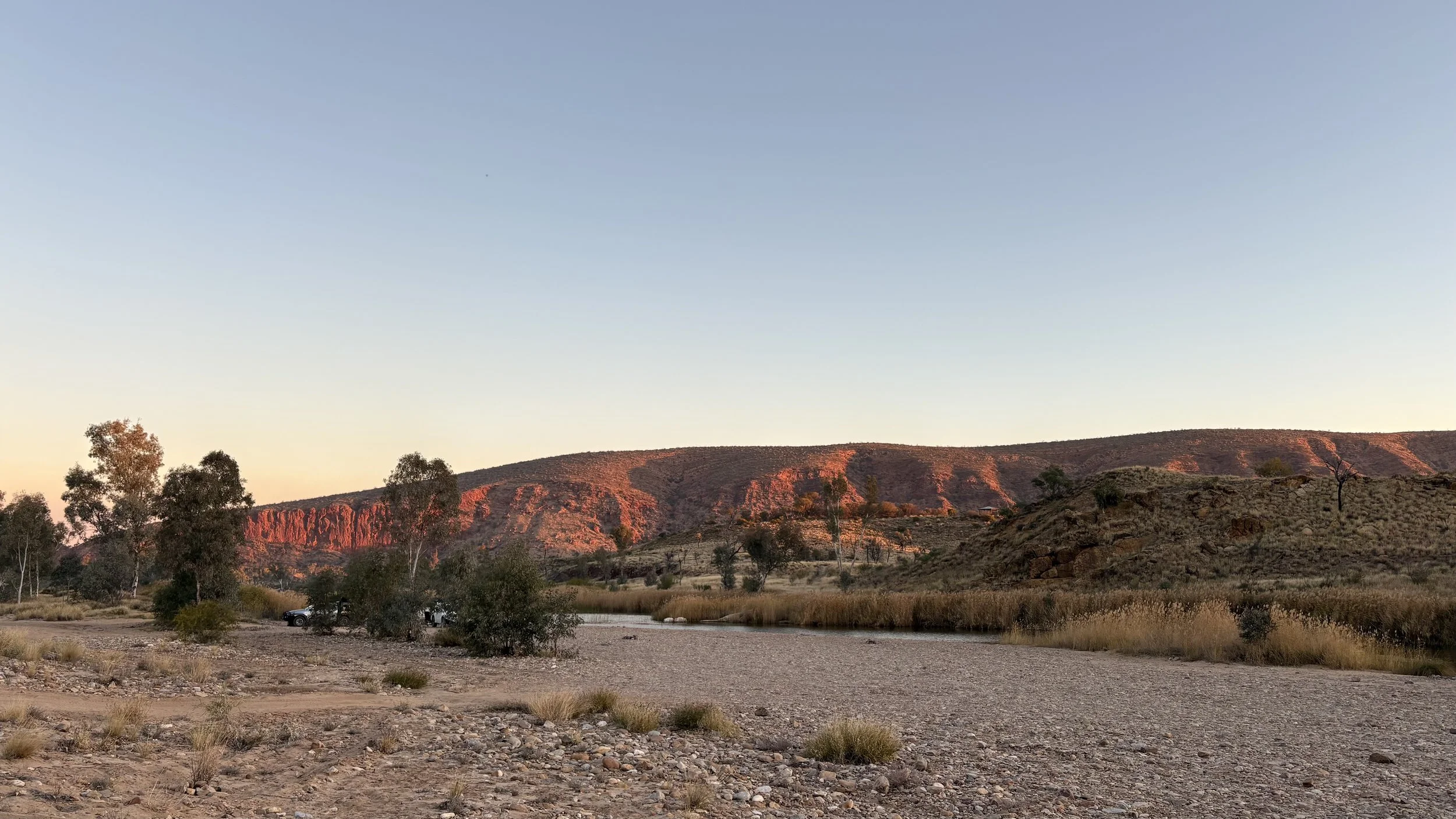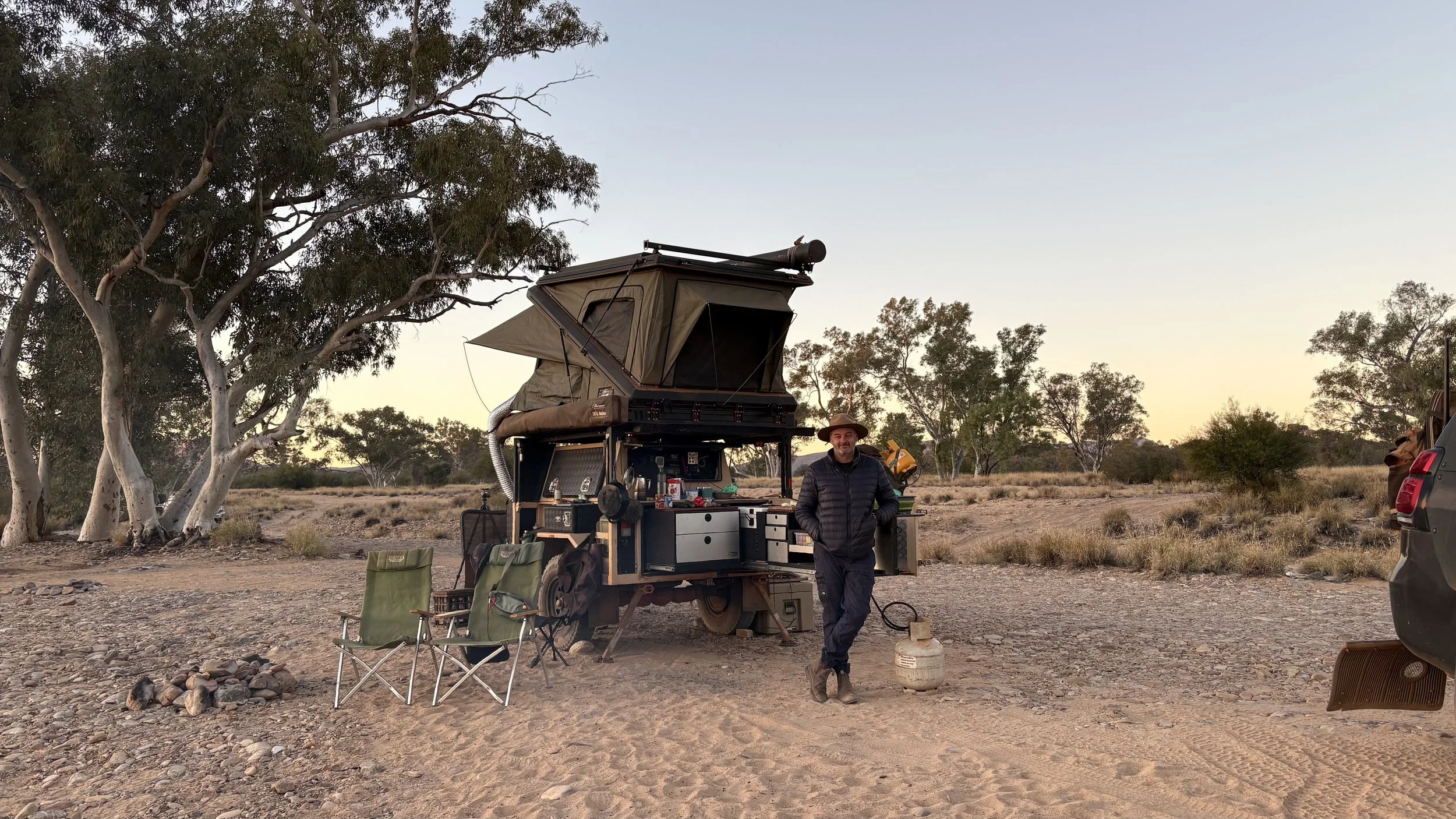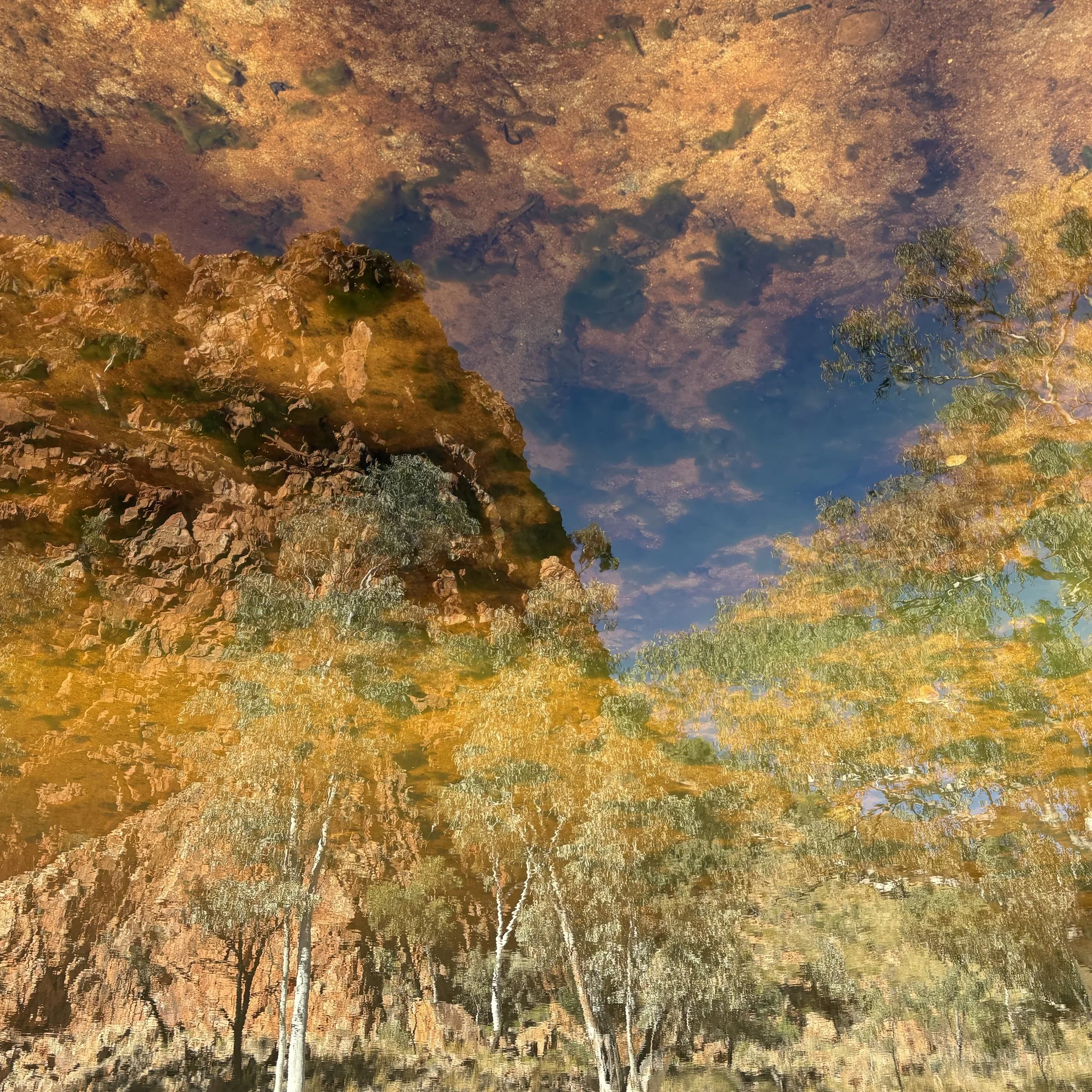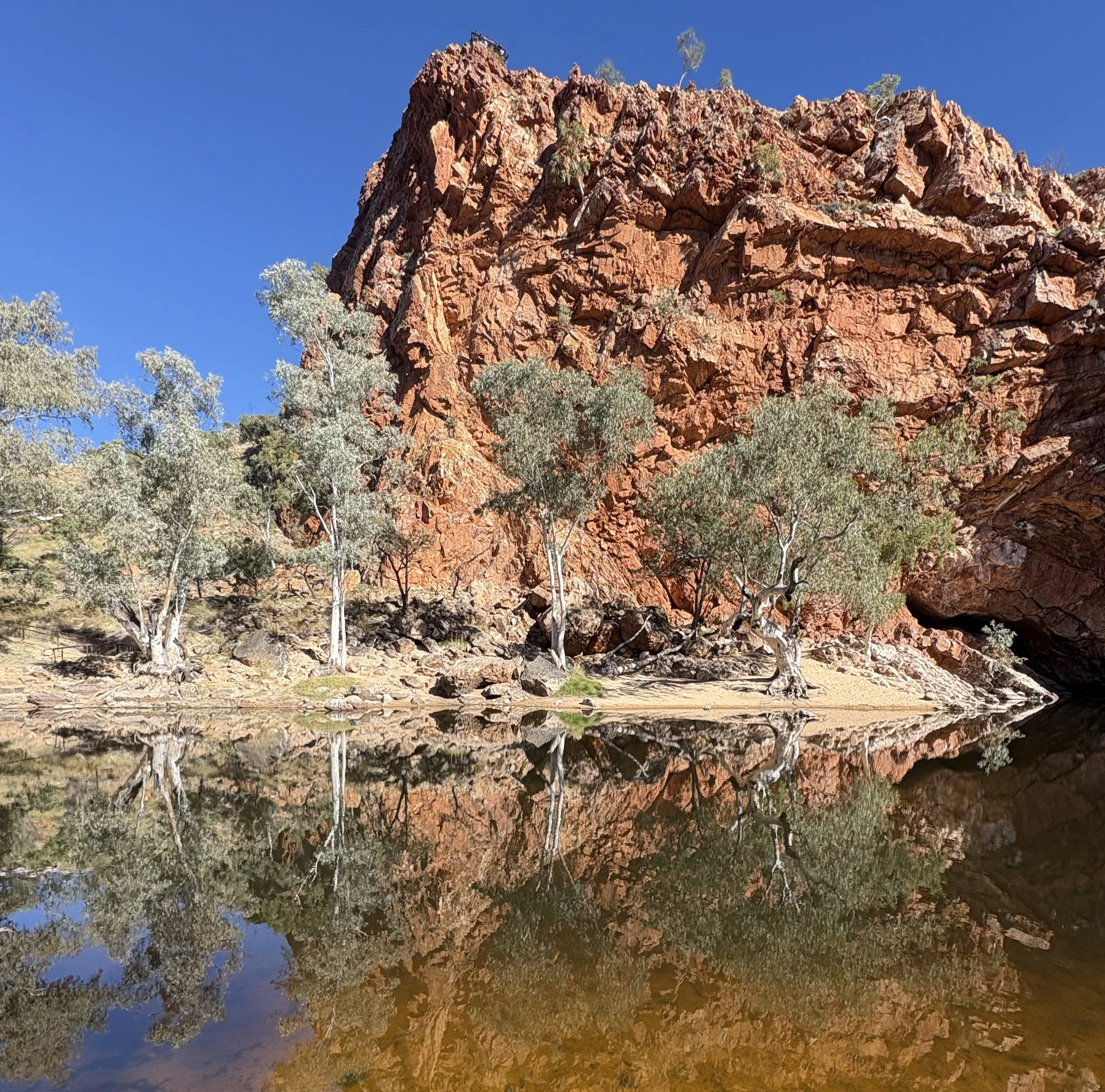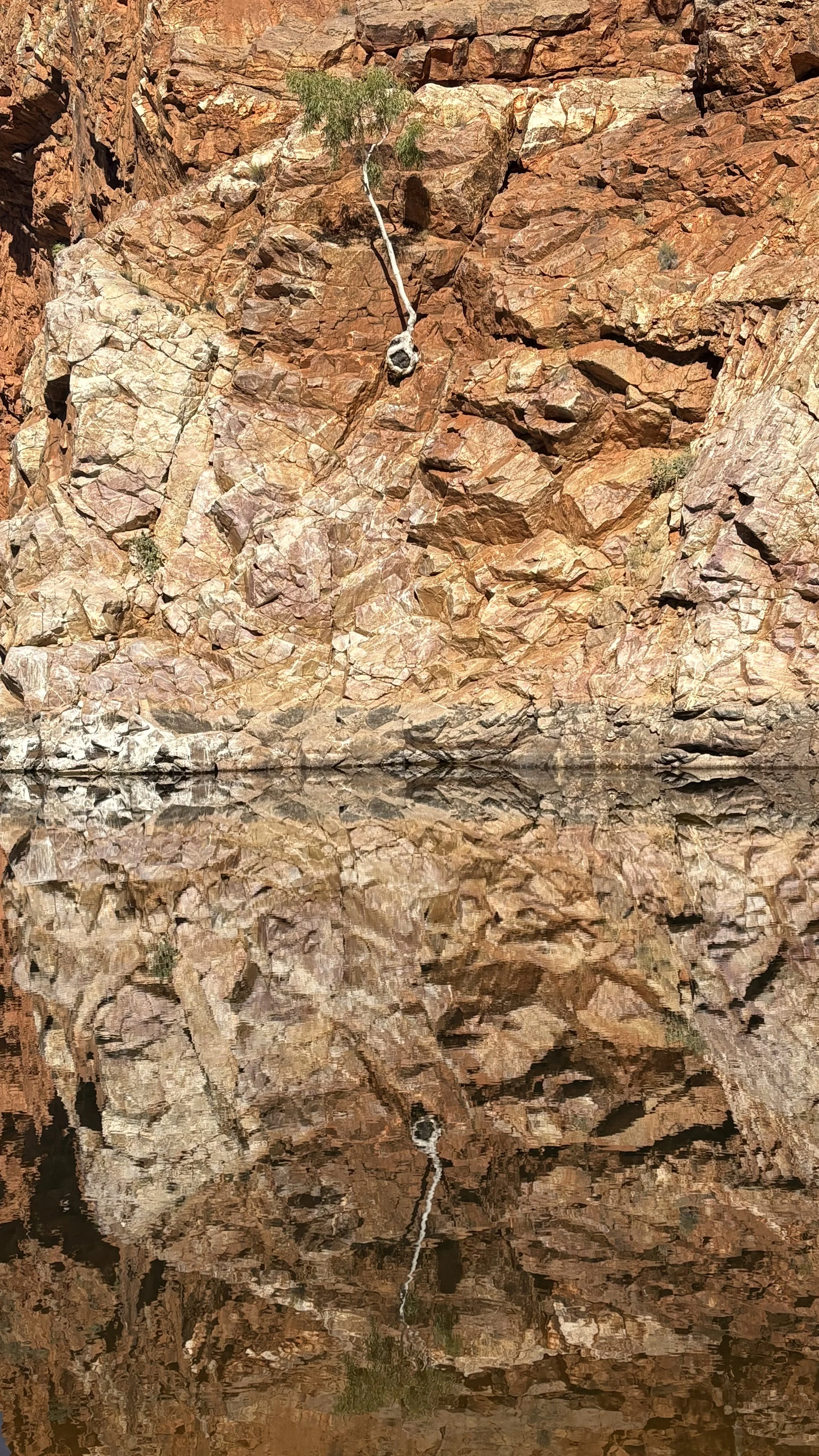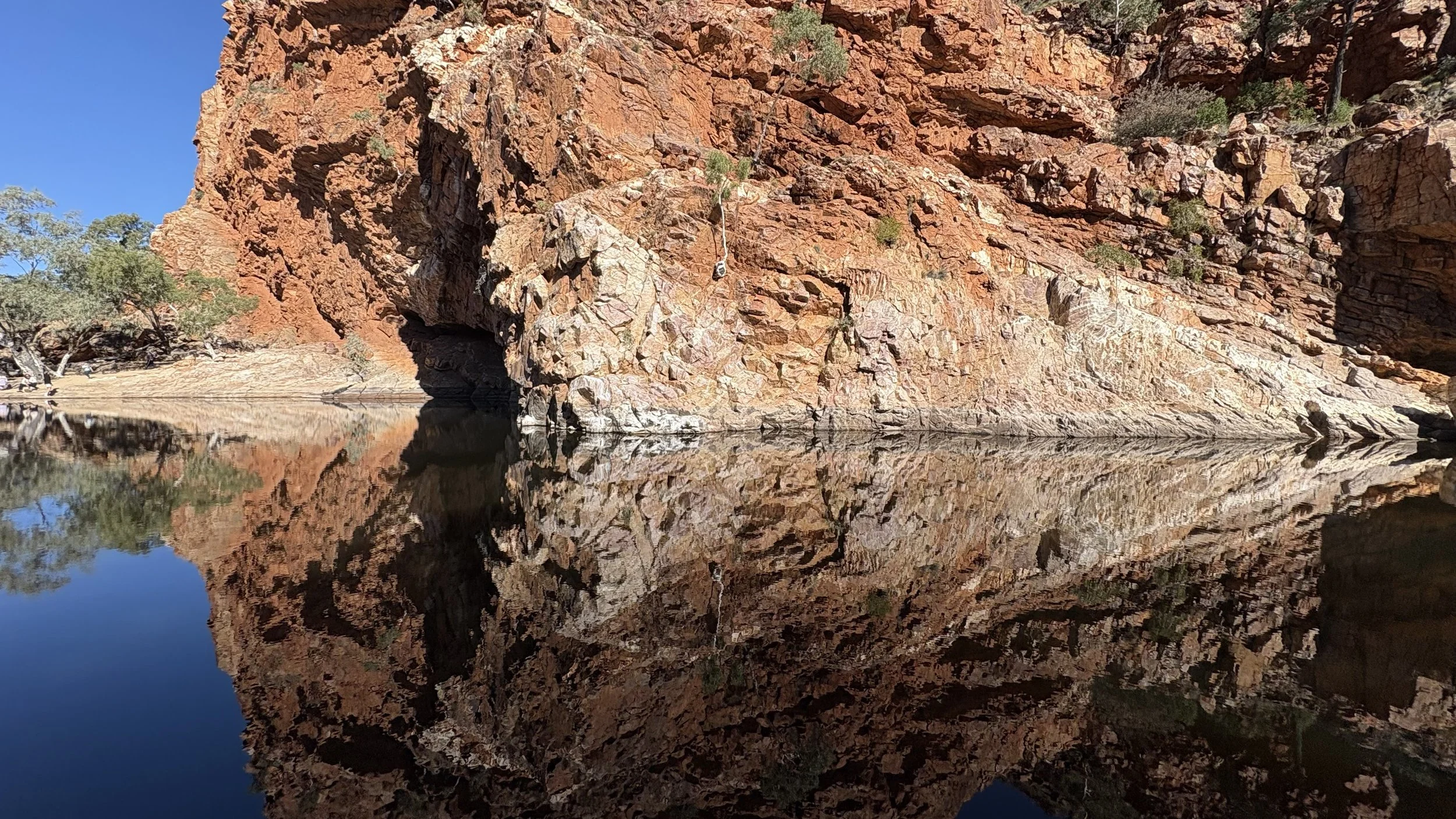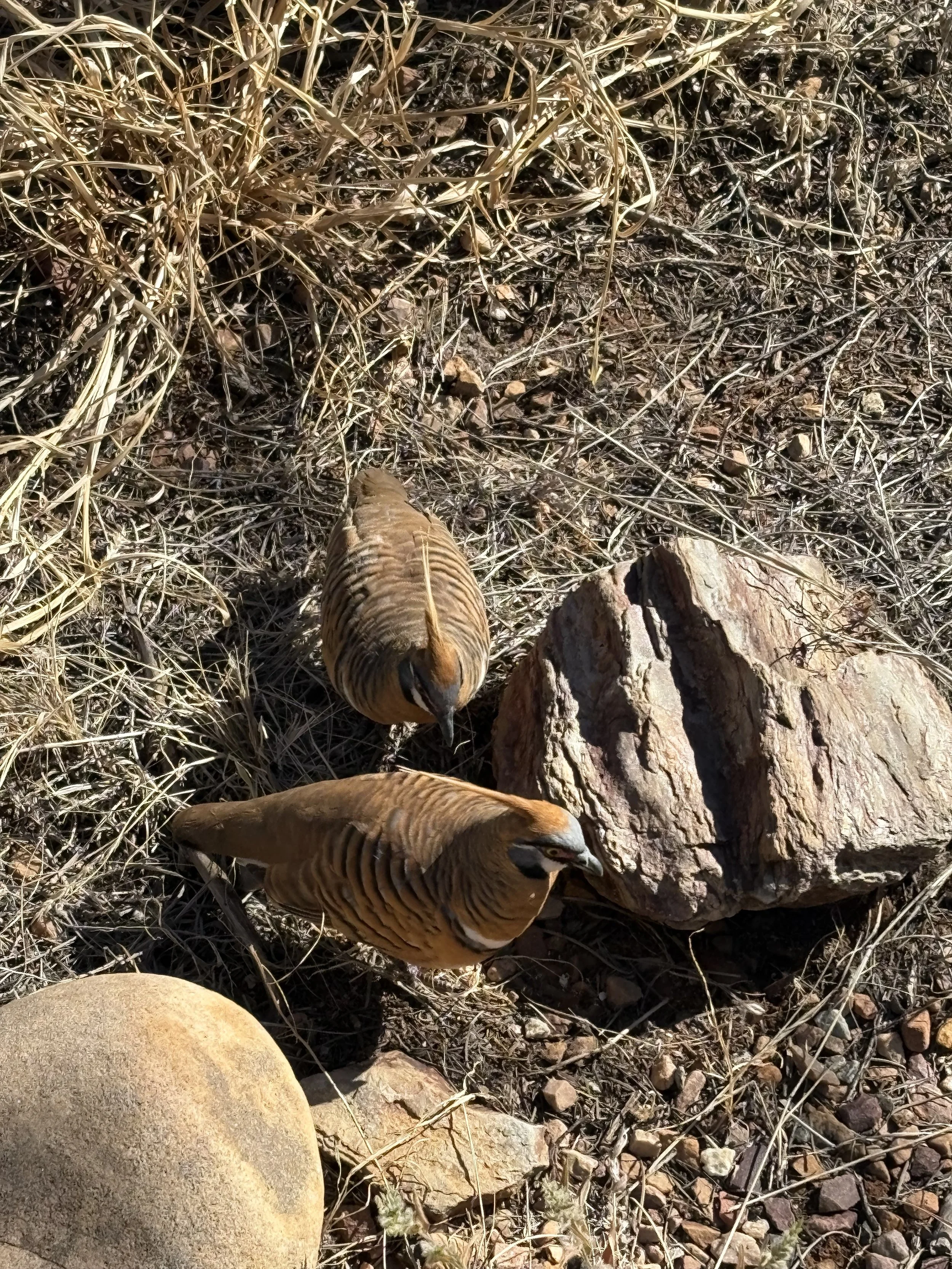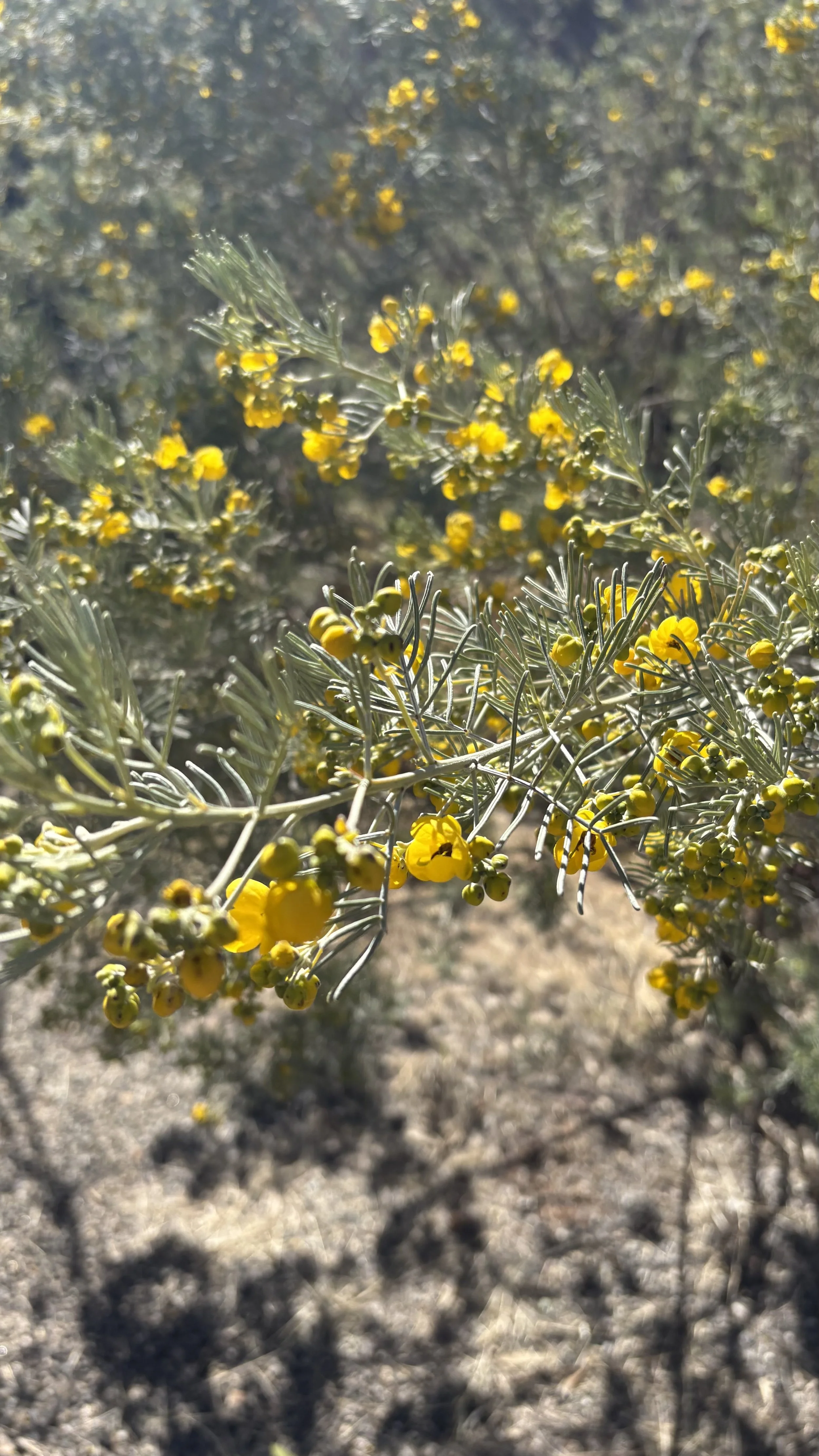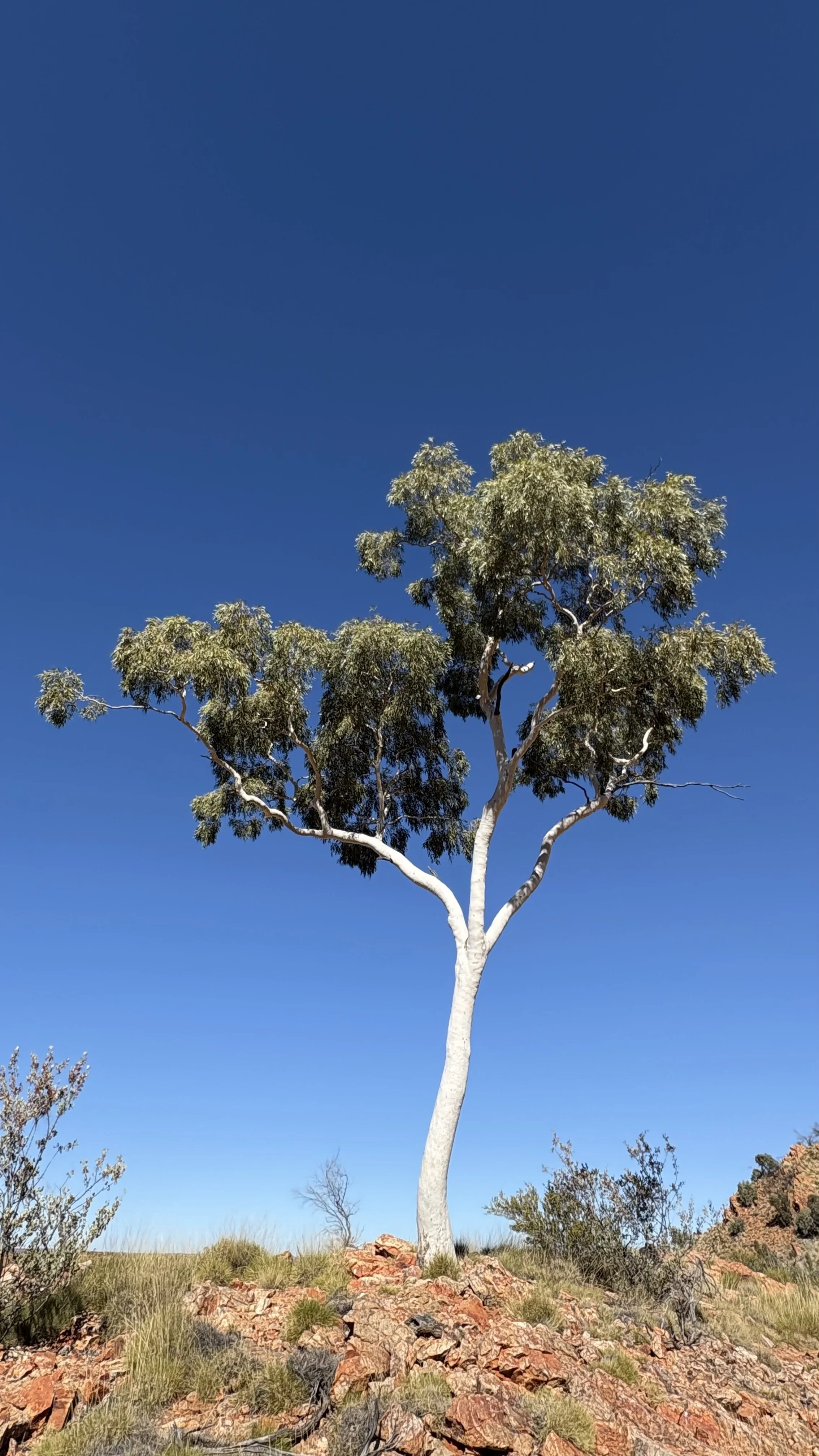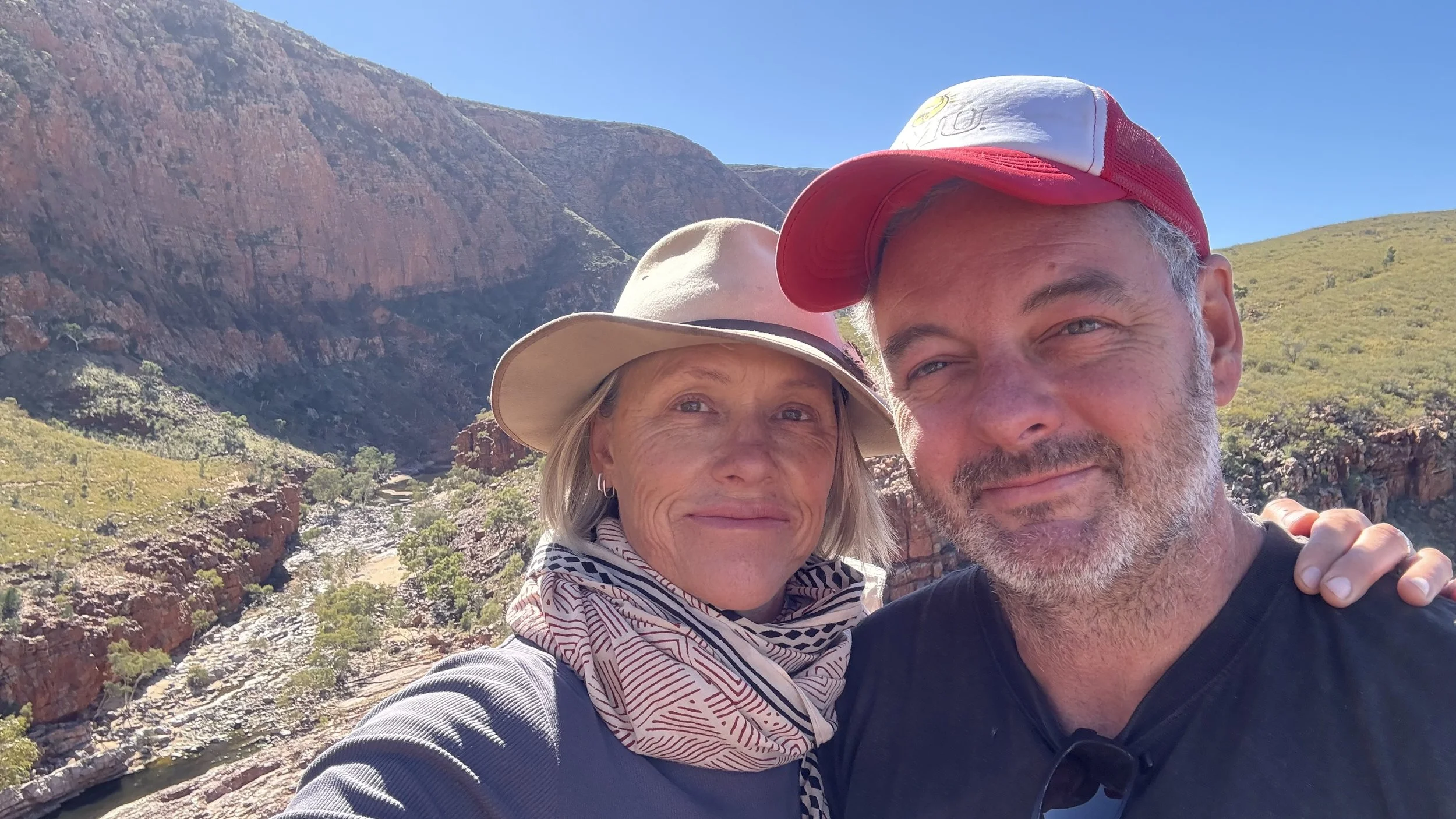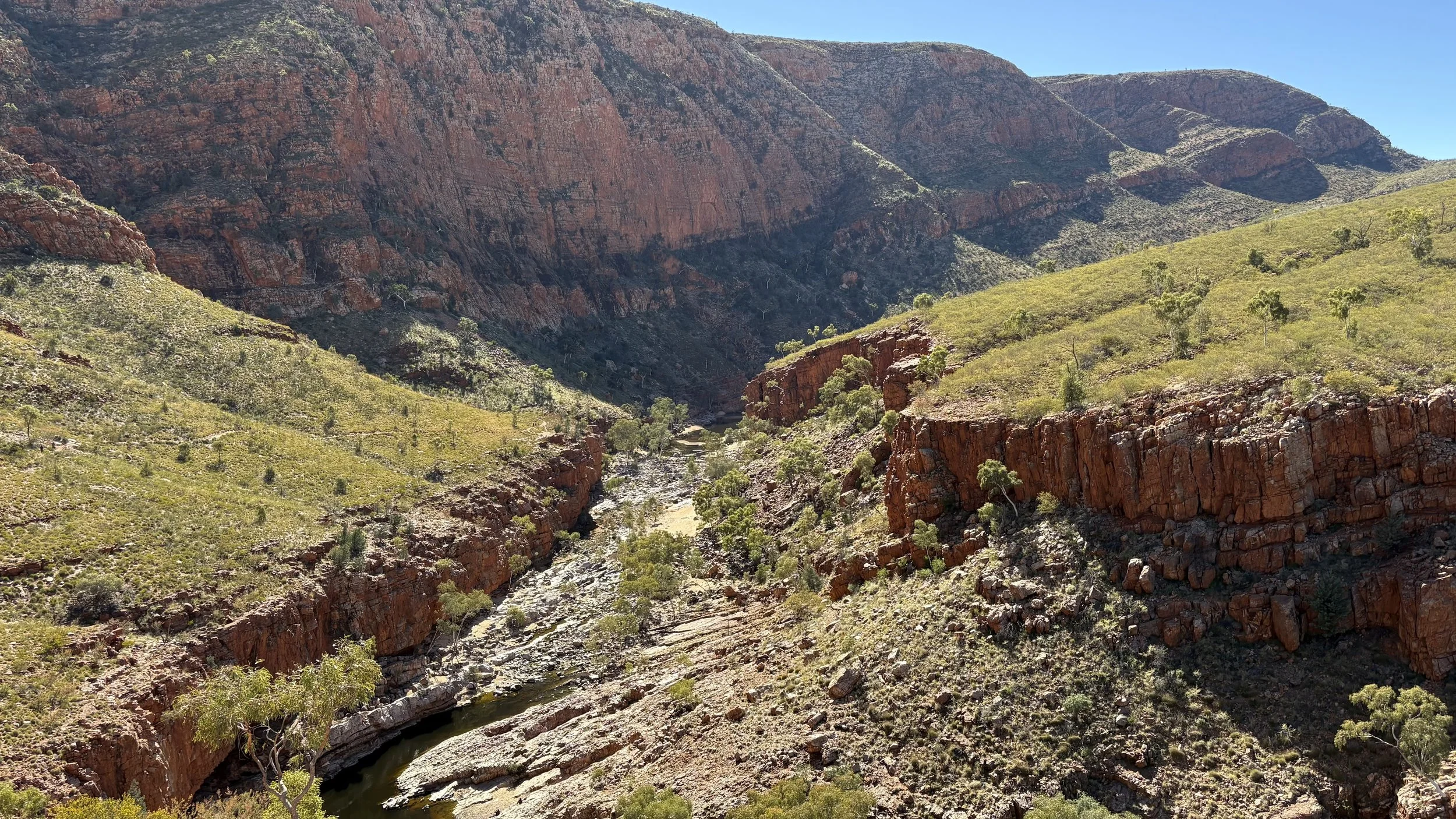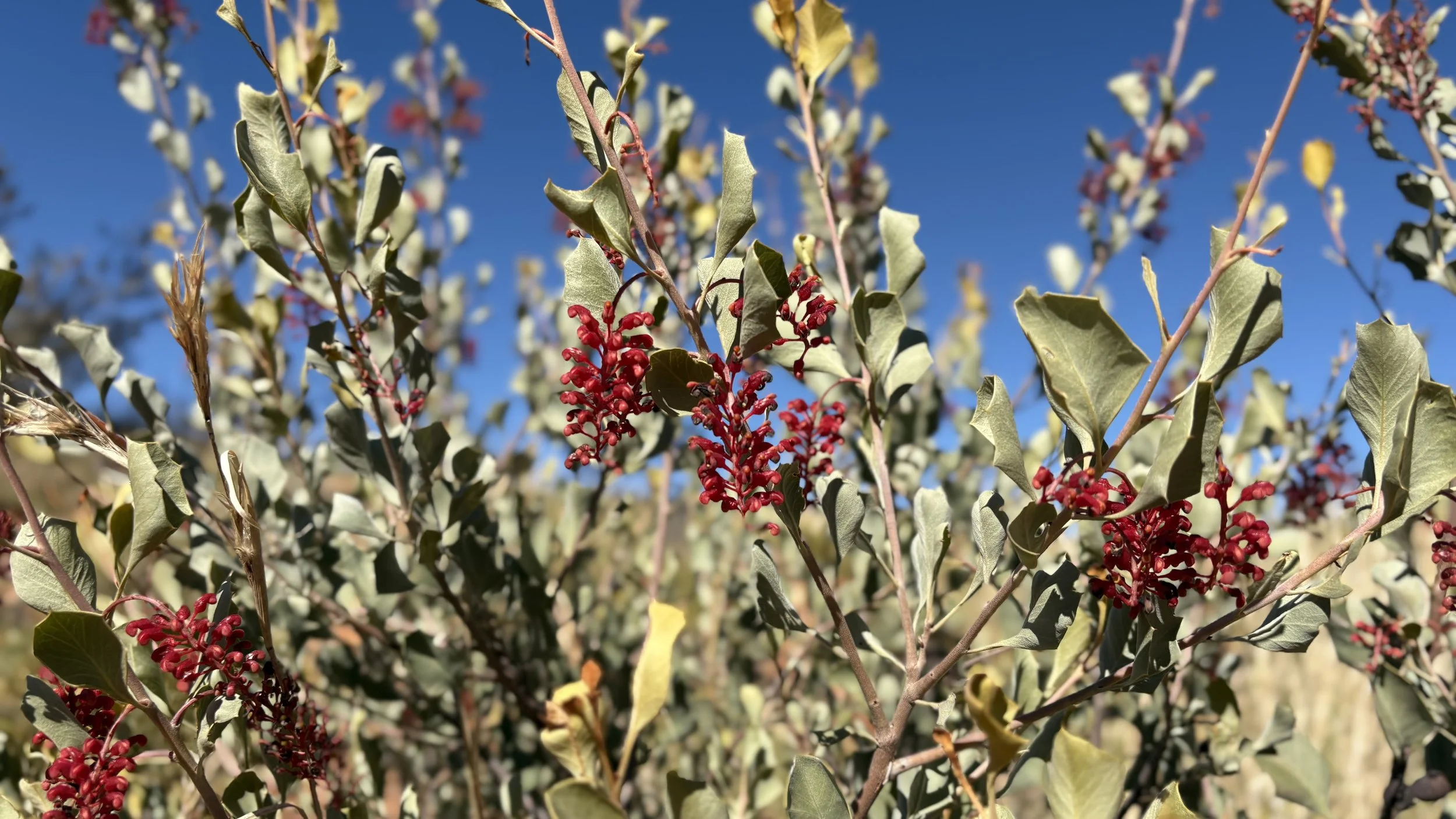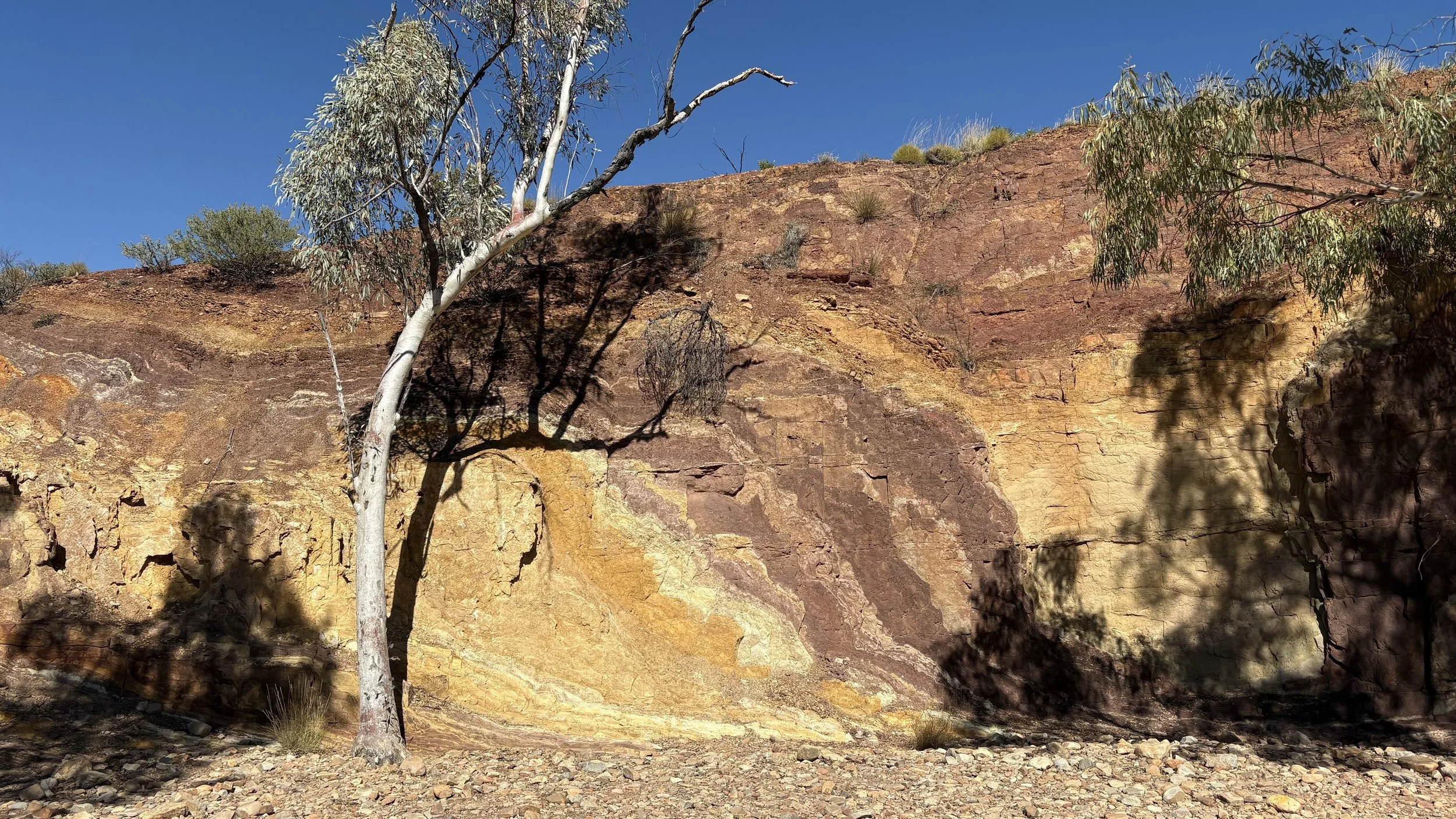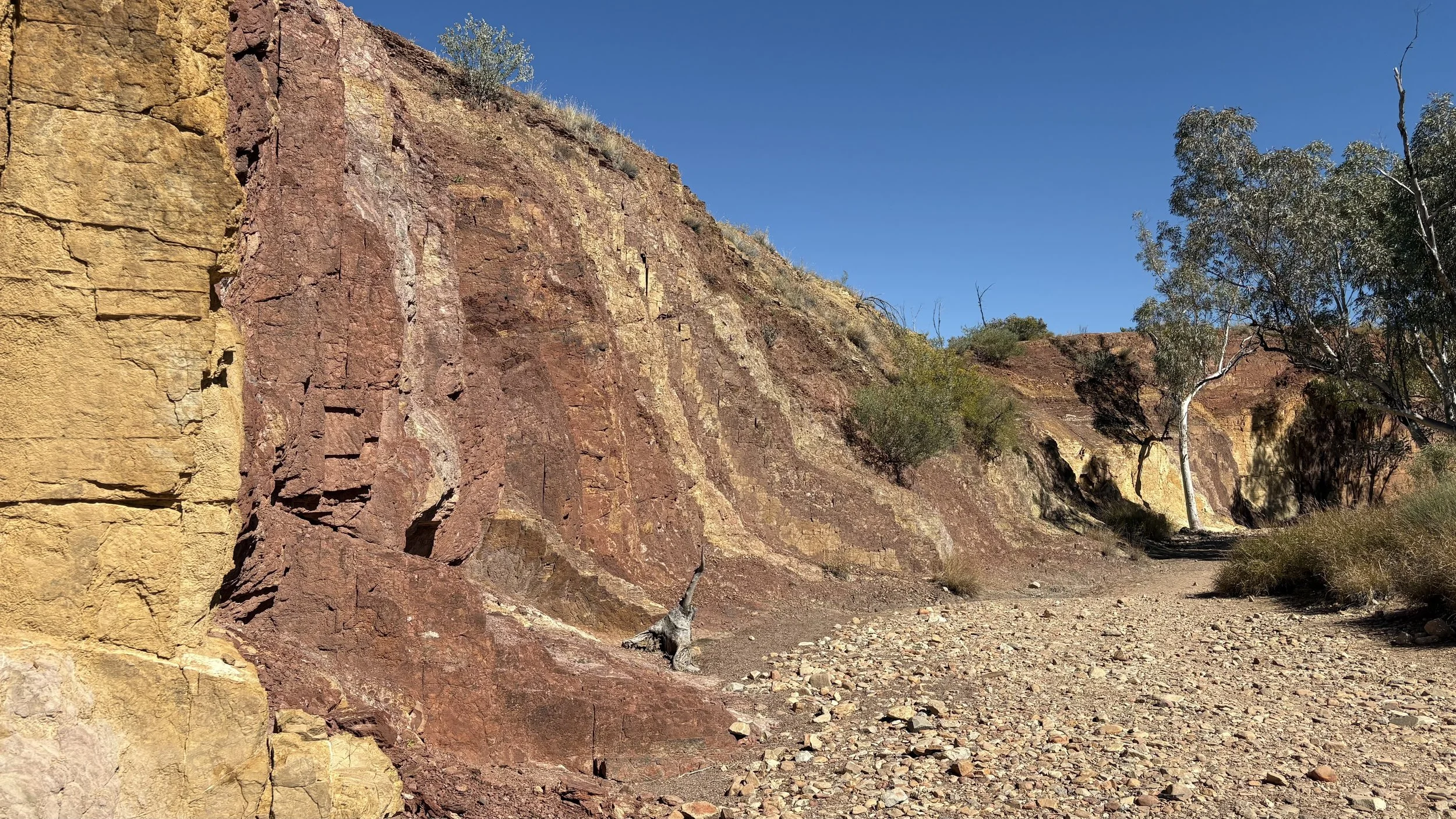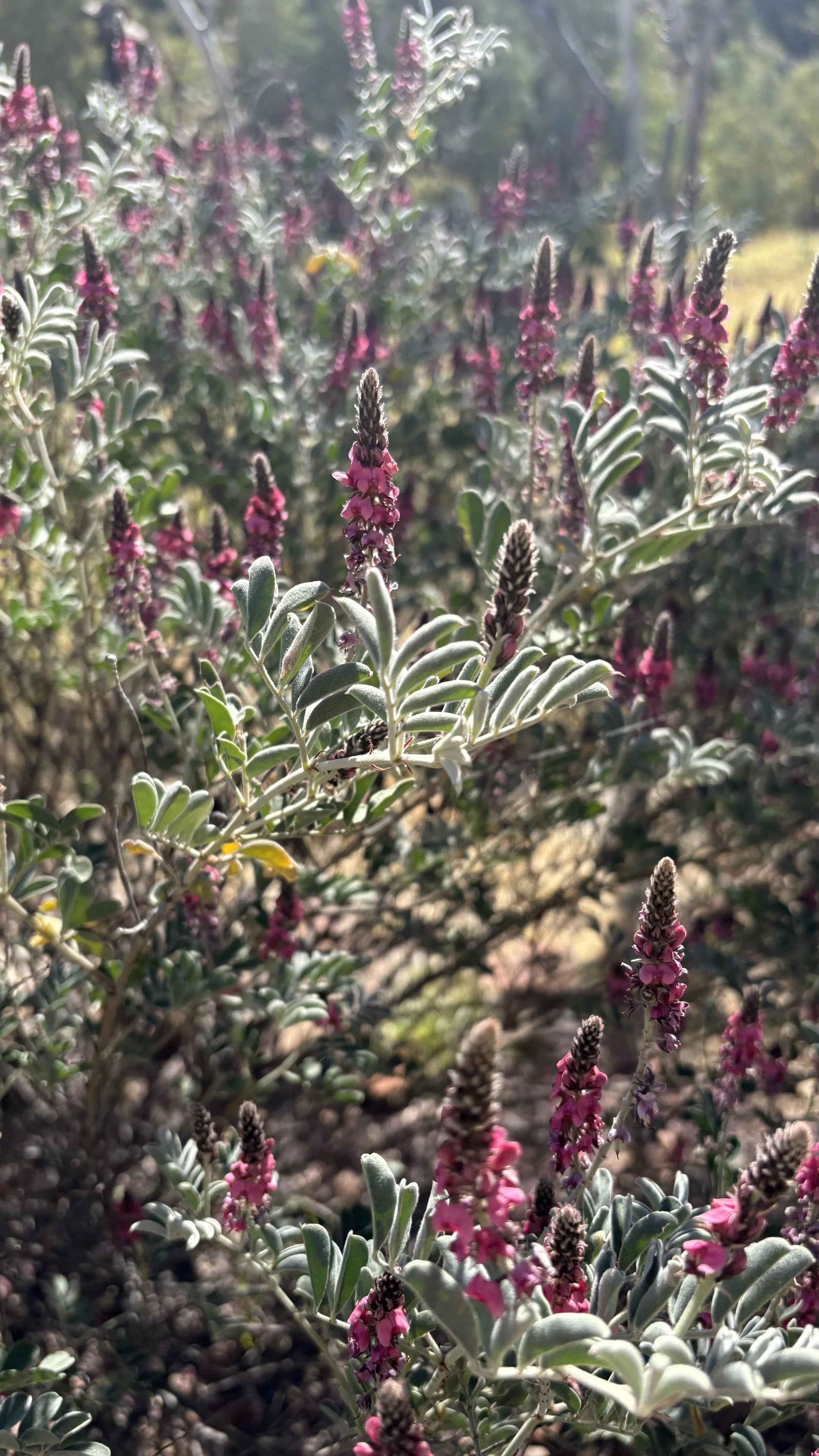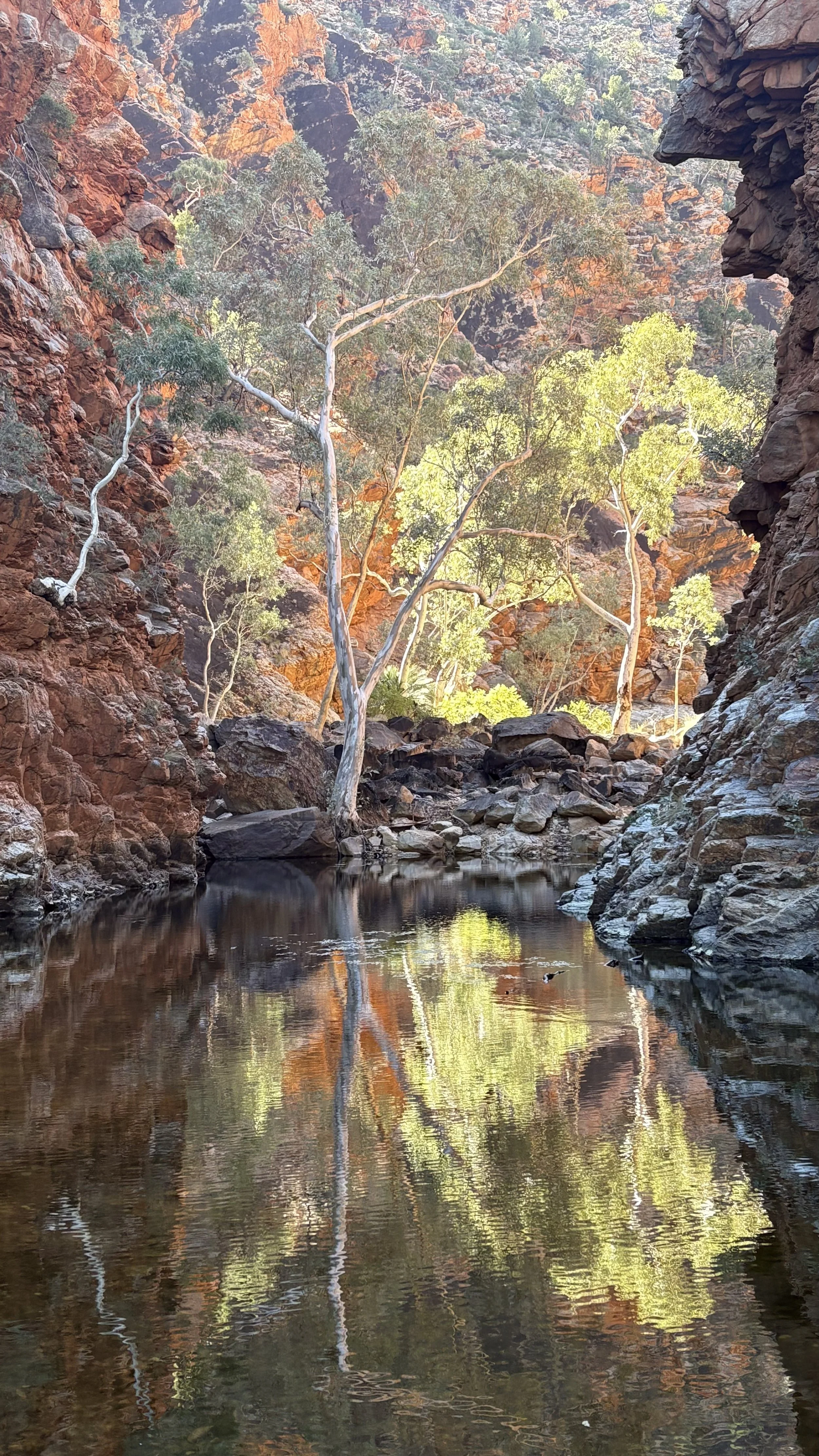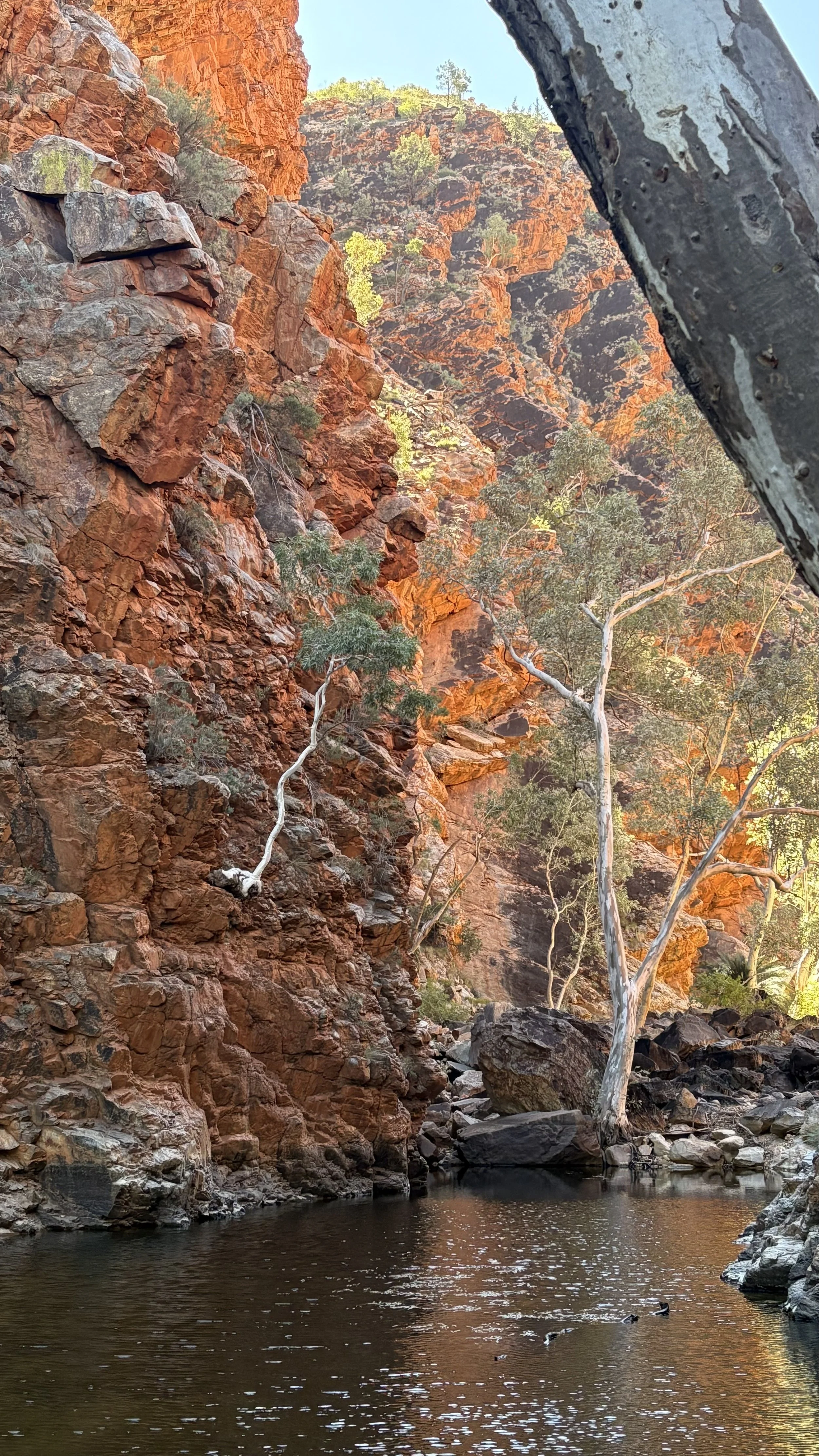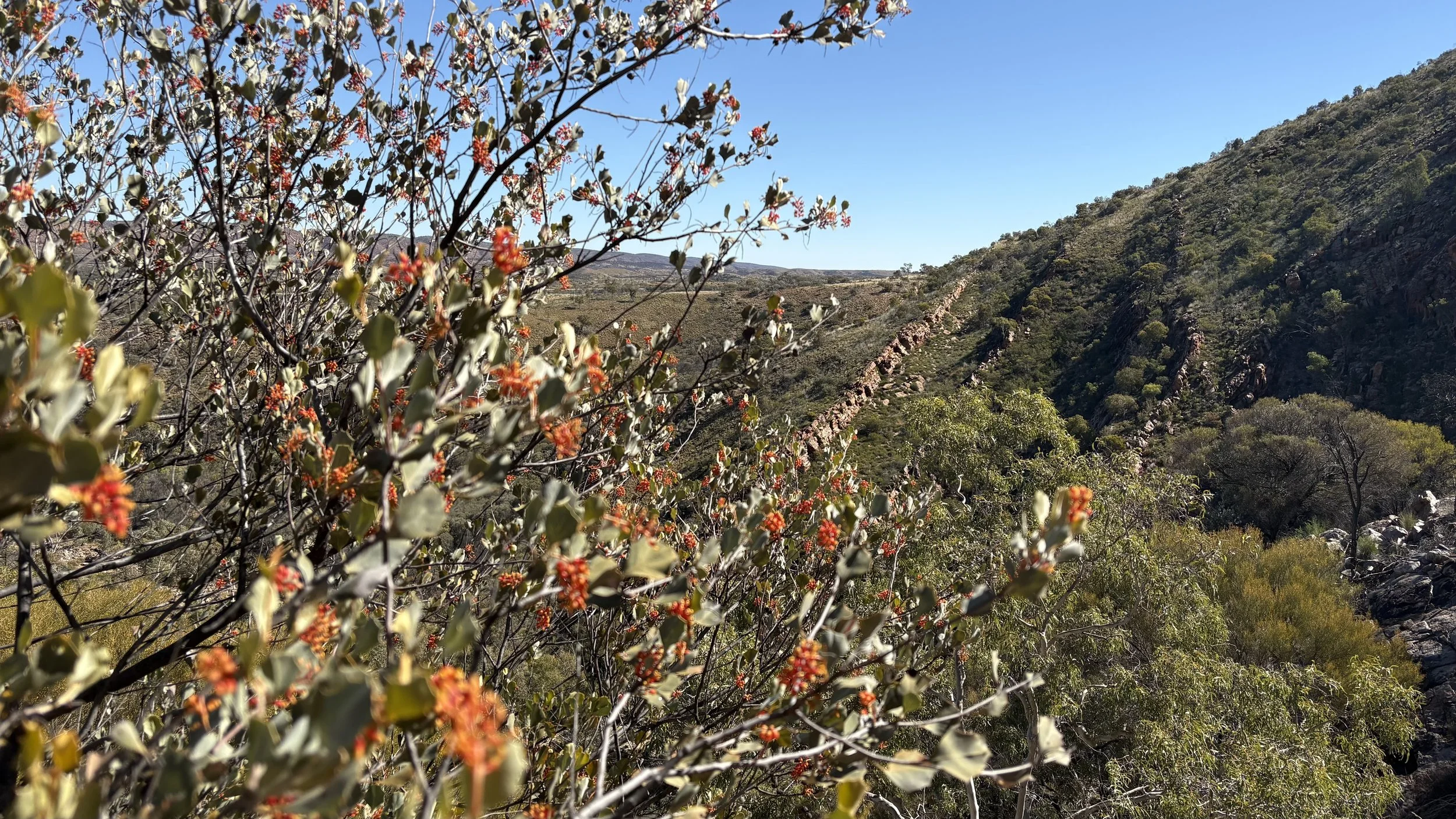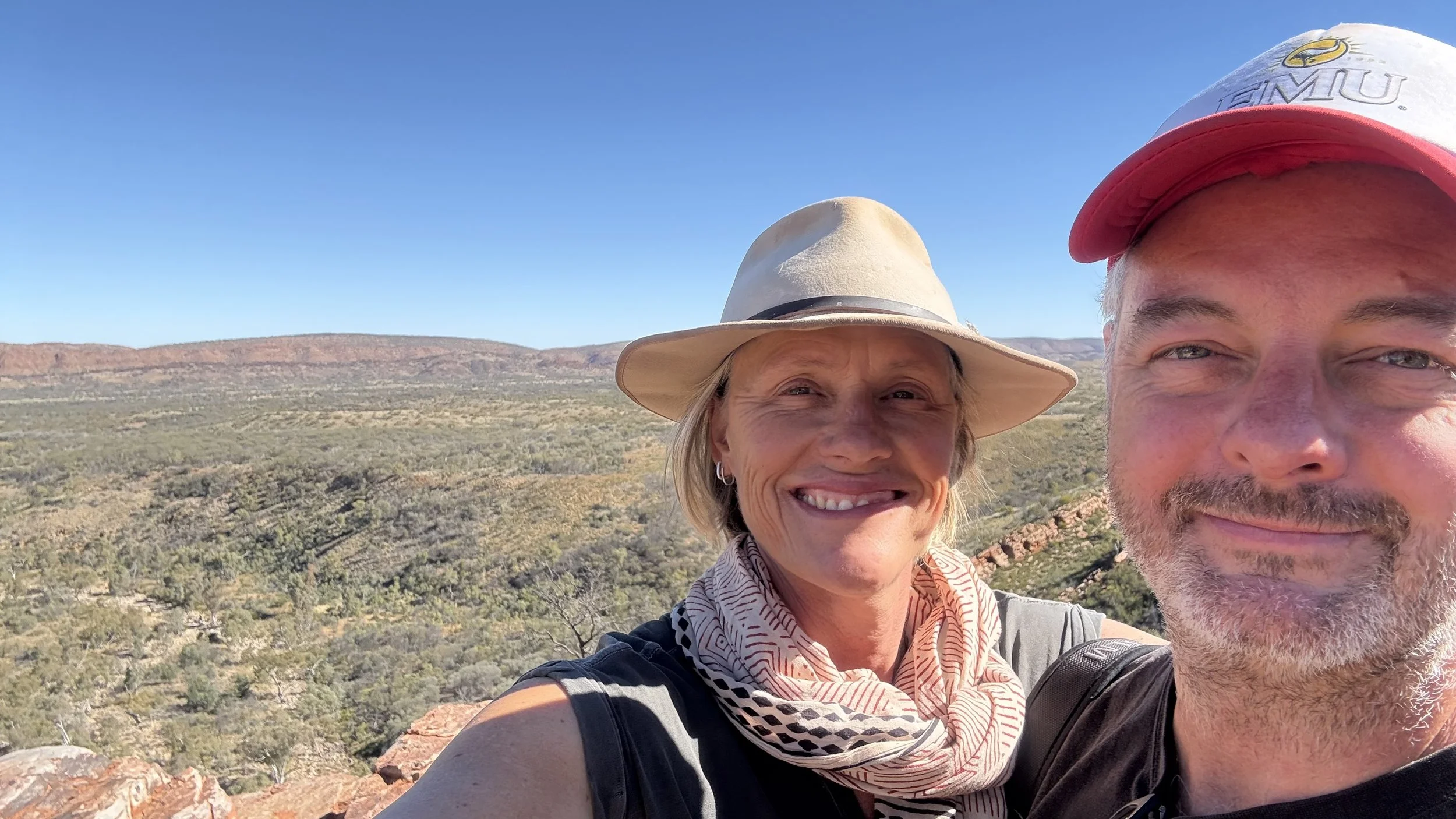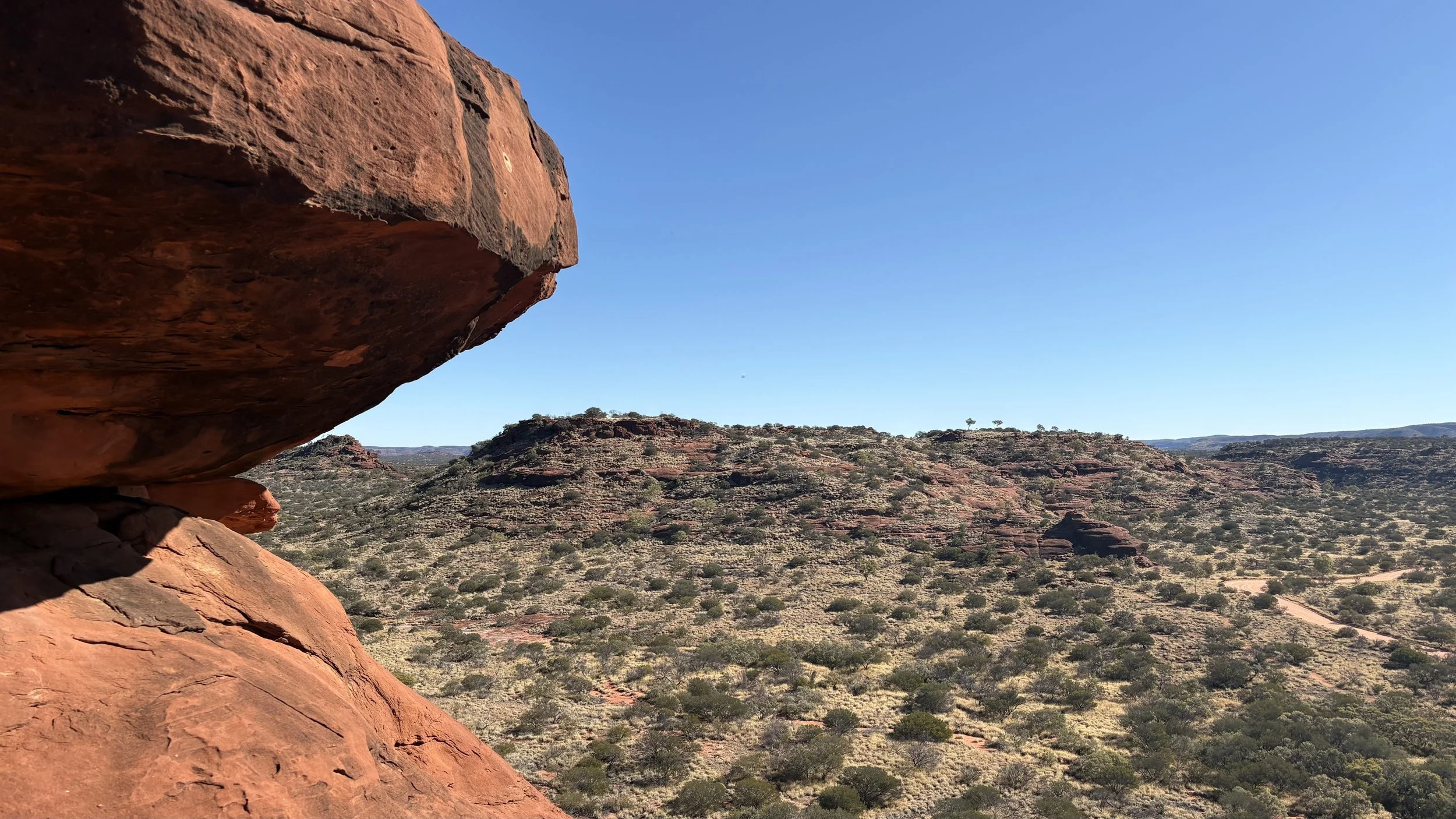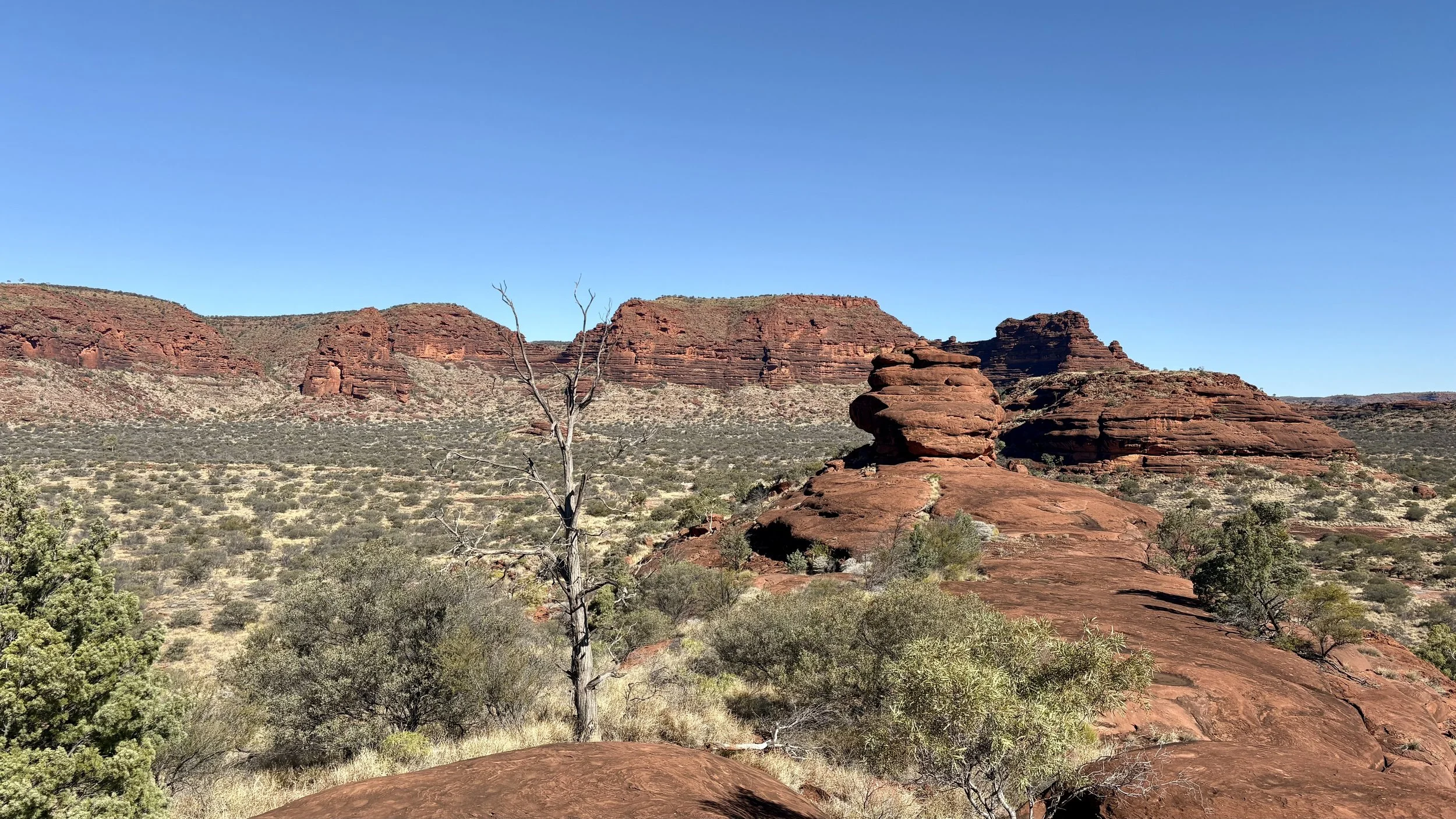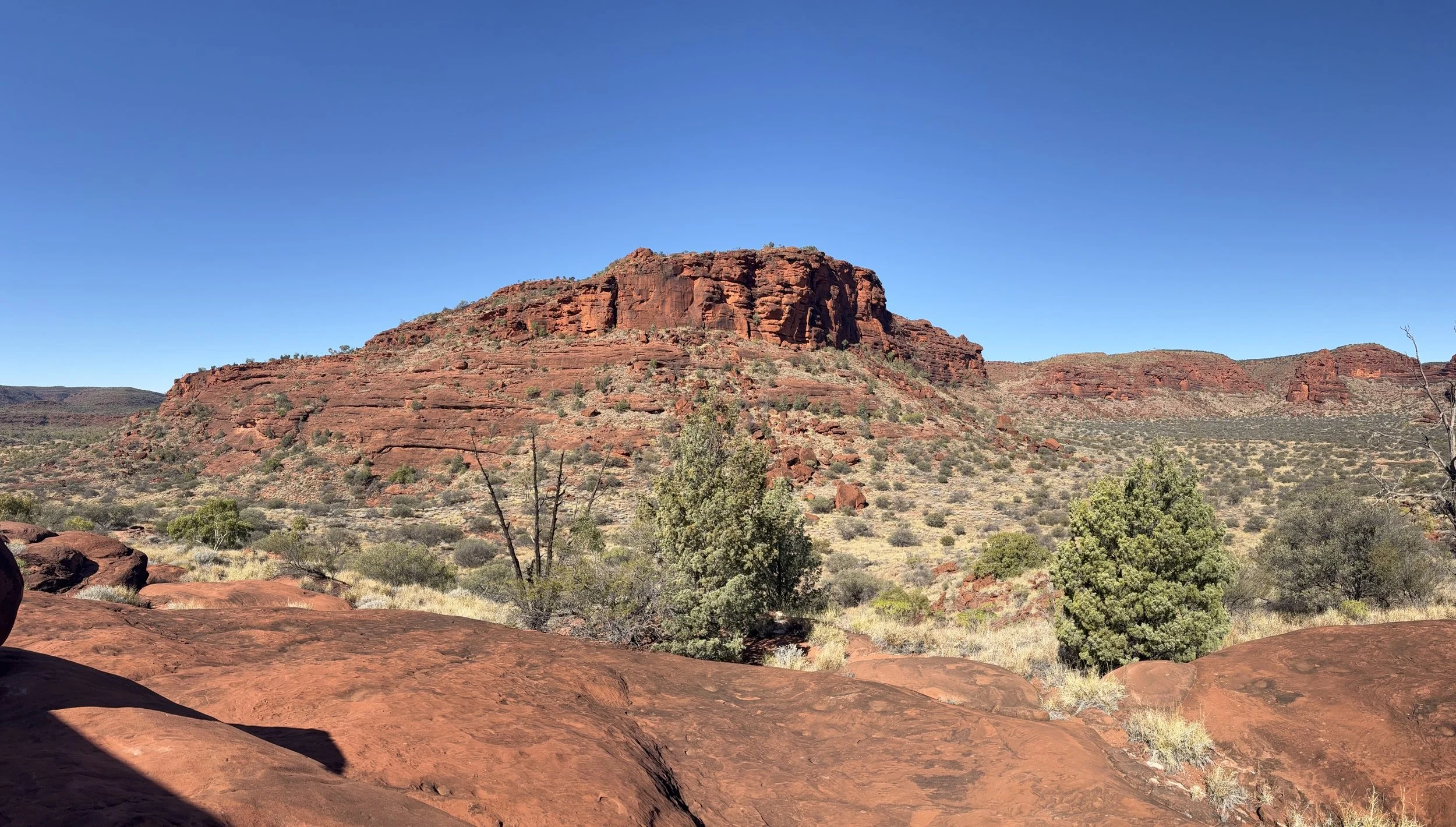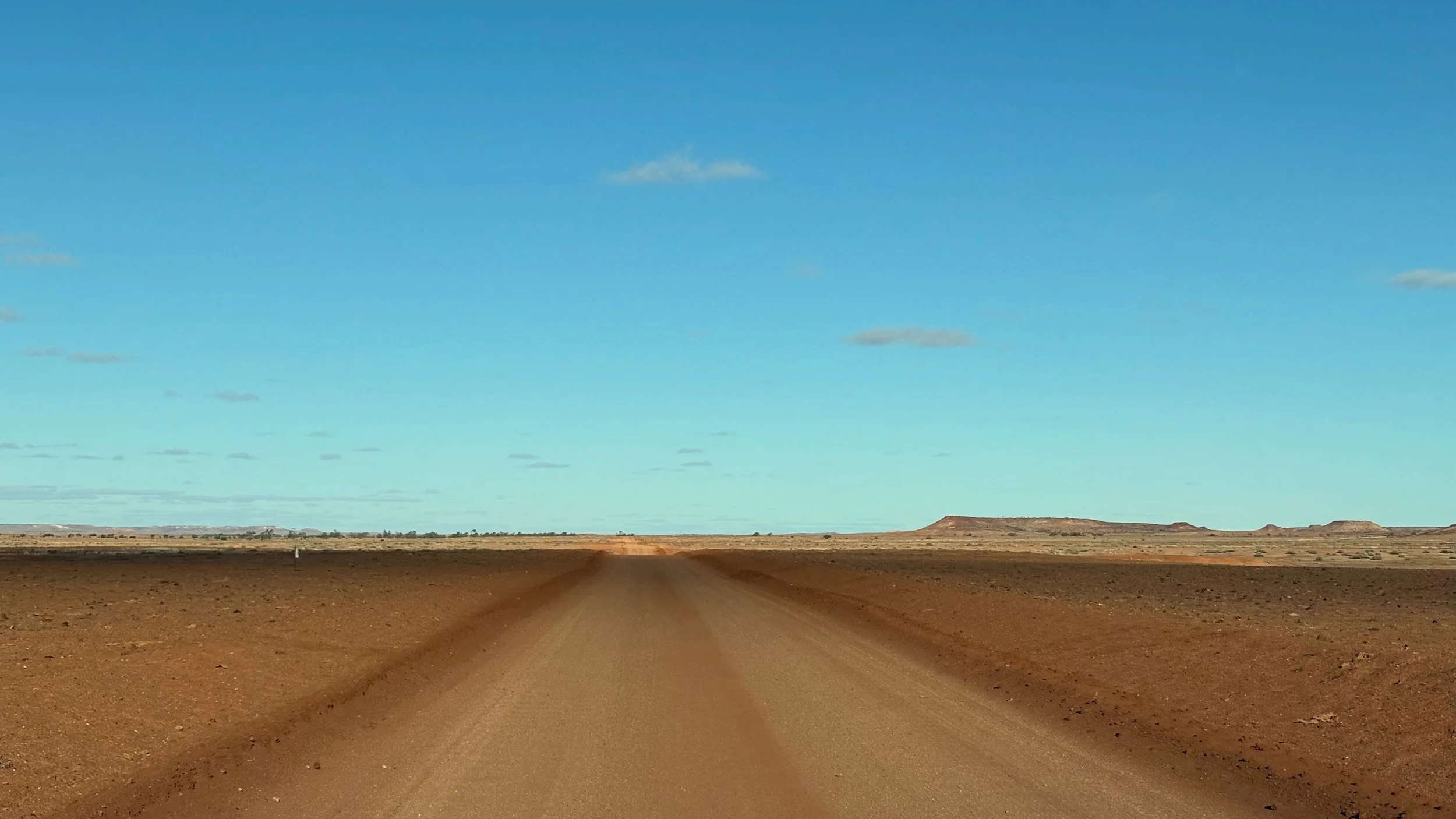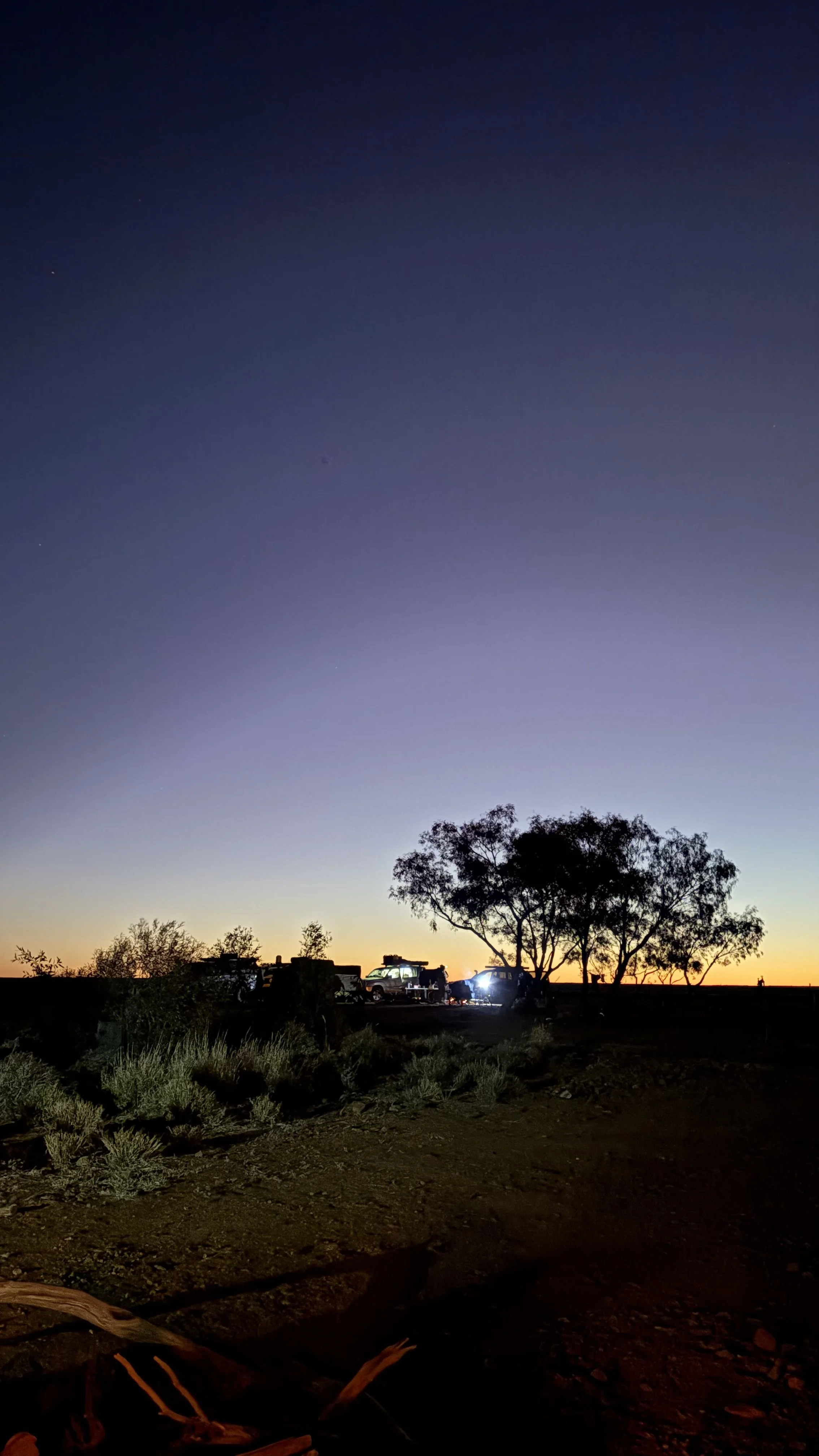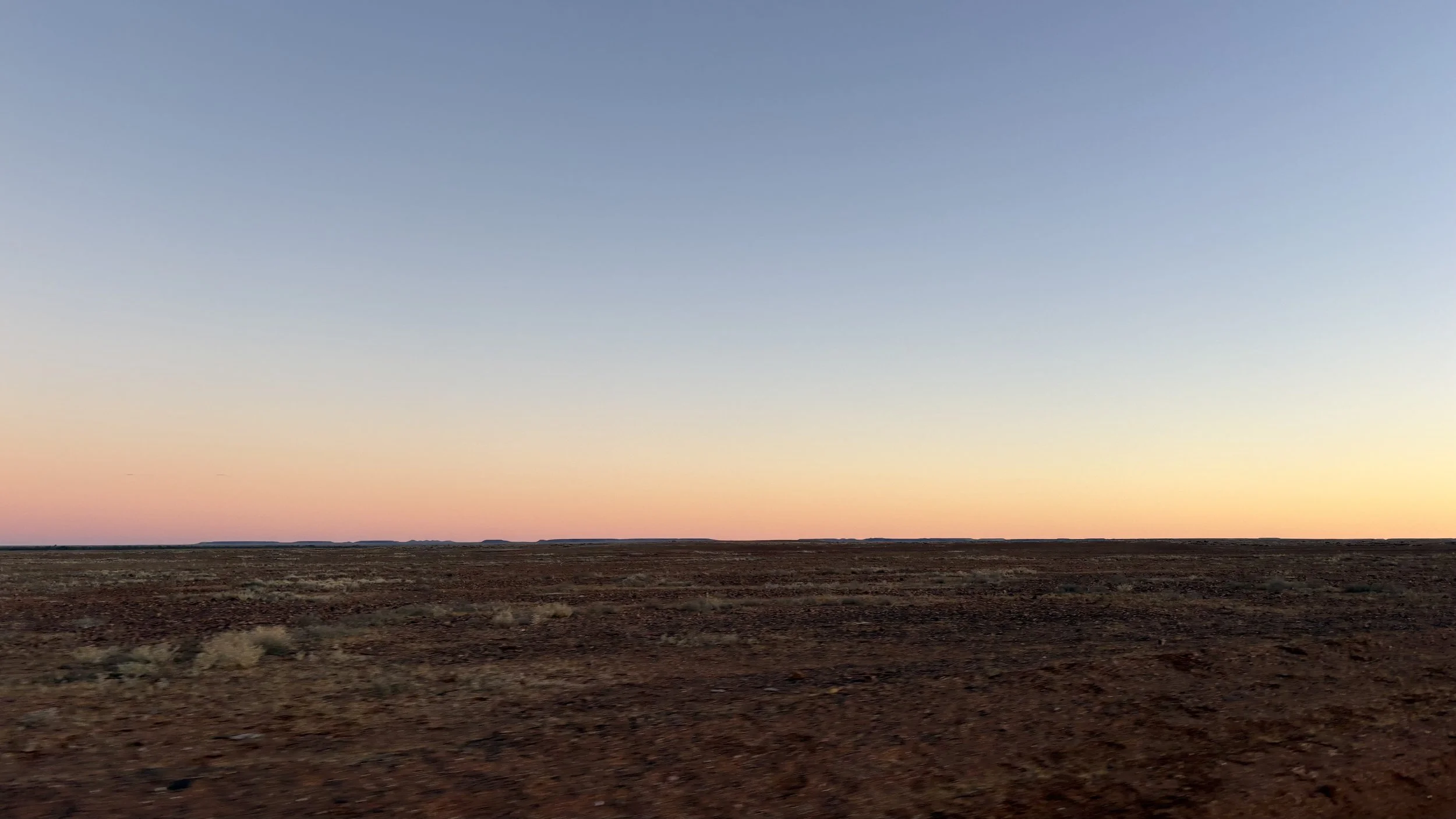Week 22 trouble on the Tanami
Wolfe Creek Meteorite Crater marks our final stop in Western Australia. We drive the 154 km from Halls Creek and manage to snag the last campsite. After setting up, we wander up to the crater rim. It’s an almost perfect circle, the rock bursting from the earth. At its centre lies a shallow pool, flocks of birds wheeling above. As the sun dips, I walk the crater’s edge while Jeremy gets the evening fire going.
It’s a stunning place, especially at sunset. The white trunks of the sparse gums glow rosy-gold in the fading light, grasses and spinifex catching the colour too. No more termite mounds out here.
The next morning, before crossing into the Northern Territory, we detour to Balgo, an Aboriginal community, to visit the art gallery. The centre is tired; the manager is leaving after seven years. She casually tells us that the store is closed—“the boys broke in last night.”
At the gallery, we come across the Ngardi to English Dictionary, a 40-year collaboration between linguists, anthropologists and local community members. We meet one of the elders who helped compile it. He’s kind and softly spoken. Throughout the trip, it’s mostly elders we’ve seen engaging with art, except for a few young people in Derby’s Norval Gallery.
I also notice a children’s picture book written in both Ngardi and English. It teaches basic hygiene: how to recognise and treat skin infections like scabies, care for towels, and stay clean. Simple and necessary.
We refuel at a bowser protected by a thick steel cage before saying goodbye to Western Australia after five glorious months, south to north. We haven’t travelled on many inland tracks. Kennedy Range felt remote but on a map it’s positively waterfront. These other tracks will have to wait til next time.
That night, we camp along the Tanami Track at what travellers fondly call a gravel pit. It’s quiet, remote, and just far enough from the road. We're alone under a sky so full of stars, the floor of heaven. Around us are small heaps of old ash. I think of the traditional owners, how they would have moved through this land, reading the land, the fires, and the people who’d passed before them.
We plan to camp another night, soaking up the stillness, but disaster strikes. Jeremy notices oil sprayed across the front passenger wheel arch: transmission fluid. Not good. Last year I had a transmission failure: $4,000 and three weeks in repairs.
Thankfully, we’re prepared. We have a Spot Messenger for emergencies and internet via Starlink. We call a few mechanics in Alice Springs; one can see us the next morning. Instead of ambling down the Tanami, we nurse the car to Alice Springs, arriving at 9:30 pm.
Using the Scan Gauge (acquired after transmission dramas near Lucky Bay), we monitor the transmission temps, averaging 70 km/h into Alice. It’s a long haul. We stay two nights in a caravan park instead of one. A small loss: we miss a night in the bush but better to be safe.
The mechanic removes the after-market transmission cooler and later I have two job interviews: one with a school in the Southern Highlands, another at a Catholic girls’ school for a 12-month contract. I join the online panels from the caravan park, in my best camping gear. I might’ve even brushed my hair!
Jeremy takes a meeting with an ad agency.
Real life is calling.
We’re both feeling apprehensive about returning. Work. Traffic. Noise. After six months without walls, constantly outdoors, surrounded by birdsong and open skies, how will we adjust?
Driving into Alice under cover of night, we’re surprised to wake and see it nestled between rocky outcrops, the start of the East and West MacDonnell Ranges.
Alice has featured in the news for high rates of crime and violence over the last couple of years. We don’t see much of this: we’re just passing through but I never feel unsafe. The liquor laws are tighter than WA’s; police check our ID before we can buy wine.
Frost on the tent and ice on the ground farewell us into the West MacDonnells. We keep an eye on transmission temps which are too hot again so we book in with Toyota for Monday morning. It’ll cut short our time here, but the car needs to get us home.
We camp at Finke River 2 Mile for two nights. We walk Ellery Creek, the Ghost Gum track, and Ormiston Gorge; visit the Ochre Pits. The scenery is jaw-dropping: white gums, wheat-coloured spinifex, towering cliffs—Albert Namatjira country.
We loop through Finke Gorge, stunned by yet another transformation: from limestone ridges to massive, rounded rock hills. But time is short. With 130 km back to Alice, we leave after a short walk. Another place to return to.
Toyota keeps the car all day. We’re told it’ll be ready by noon; we get it back at 3 pm. Plans shelved again. We scratch Chambers Pillar and head straight for the Painted Desert and Arckaringa.
Off the Stuart Highway, the landscape changes. Jump-ups surrounded by open plains, the palette softer, gentler. Spinifex disappears.
We camp at Arckaringa Station, the only place with easy access to the Painted Desert. A hot shower without a setup feels luxurious. It’s the small things to be grateful for.
The plain is interrupted only by distant jump-ups. Between there and here, absolutely flat. The stars, maybe the best of the whole trip, spread endlessly above. We enjoy the warmth of the fire. It’s midwinter now: blue-sky days and crisp, icy nights.
